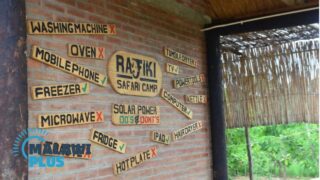- 50 Best Things to Do in Malawi
- Water Sports
- Wildlife
- 11. Nyika National Park (Rumphi)
- 12. Liwonde National Park (Machinga)
- 13. Lengwe National Park (Chikwawa)
- 14. Kasungu National Park (Kasungu)
- 15. Majete Wildlife Reserve (Chikwawa)
- 16. Nkhotakota Wildlife Reserve (Nkhotakota)
- 17. Vwaza Marsh Wildlife Reserve (Rumphi)
- 18. Kuti Wildlife Reserve (Salima)
- 19. Game Haven (Thyolo)
- Bird Watching
- 20. Birdwatching in Nyika National Park
- 21. Birdwatching in Lengwe National Park
- 22. Birdwatching in Liwonde National Park
- 23. Birdwatching in Lake Malawi
- 24. Birdwatching in Mount Mulanje
- 25. Birdwatching in Dzalanyama Forest Reserve
- 26. Birdwatching in Zomba Plateau
- 27. Birdwatching in Lake Chilwa
- 28. Birdwatching in Ntchisi Forest Reserve
- Hiking
- 29. Hiking Mount Mulanje (Mulanje)
- 30. Hiking Nyika Plateau (Rumphi)
- 31. Hiking Zomba Plateau (Zomba)
- 32. Hiking Viphya Plateau (Mzimba)
- 33. Hiking Ntchisi Forest Reserve (Ntchisi)
- 34. Hiking Nkhoma Mountain (Lilongwe)
- 35. Hiking Michiru Mountain (Blantyre)
- 36. Hiking Satemwa Tea Estate (Thyolo)
- 37. Hiking Chombe Plateau (Rumphi)
- Cultural and Historical Sites
- 38. Chongoni Rock Art Area (Dedza)
- 39. National War Memorial Tower (Lilongwe)
- 40. Kungoni Centre and Chamare Museum (Dedza)
- 41. Cultural & Museum Centre Karonga - CMCK (Karonga)
- 42. Museum of Malawi (Chichiri Museum) (Blantyre)
- 43. St. Peter's Cathedral (Likoma)
- 44. St. Michael and All Angels Church (Blantyre)
- 45. Livingstonia Mission Church and Stone House
- Local Food and Drink
50 Best Things to Do in Malawi
Malawi is located in the south-east of Africa, bordering Mozambique, Tanzania and Zambia.
Described as the ‘Warm Heart of Africa’, Malawi offers a warm welcome to visitors.
Many tourists cite the interaction with the people they met in the markets and villages as a highlight of their trip.
Lake Malawi, the third largest lake in Africa, is stunningly beautiful, huge and is said to be home to more species of fish than all European and American lakes combined.
Malawi’s National Parks and Wildlife Reserves have also attracted a lot of attention in recent years, as it is now possible to see the BIG 5 – Elephant, Leopard, Lion, Rhino and Buffalo.
Malawi is also geographically diverse, with National Parks, lush mountains, plateaus, plantations, beautiful lakes and rivers.
Its unique terrain also attracts hikers and birdwatchers.
Malawi is a great destination for first-time visitors to Africa, nature and outdoor adventure enthusiasts, and those who want to interact with African culture and people.
If you are wondering what to do in Malawi, Africa, this article will give you some recommendations for places to visit and activities to do.
Water Sports
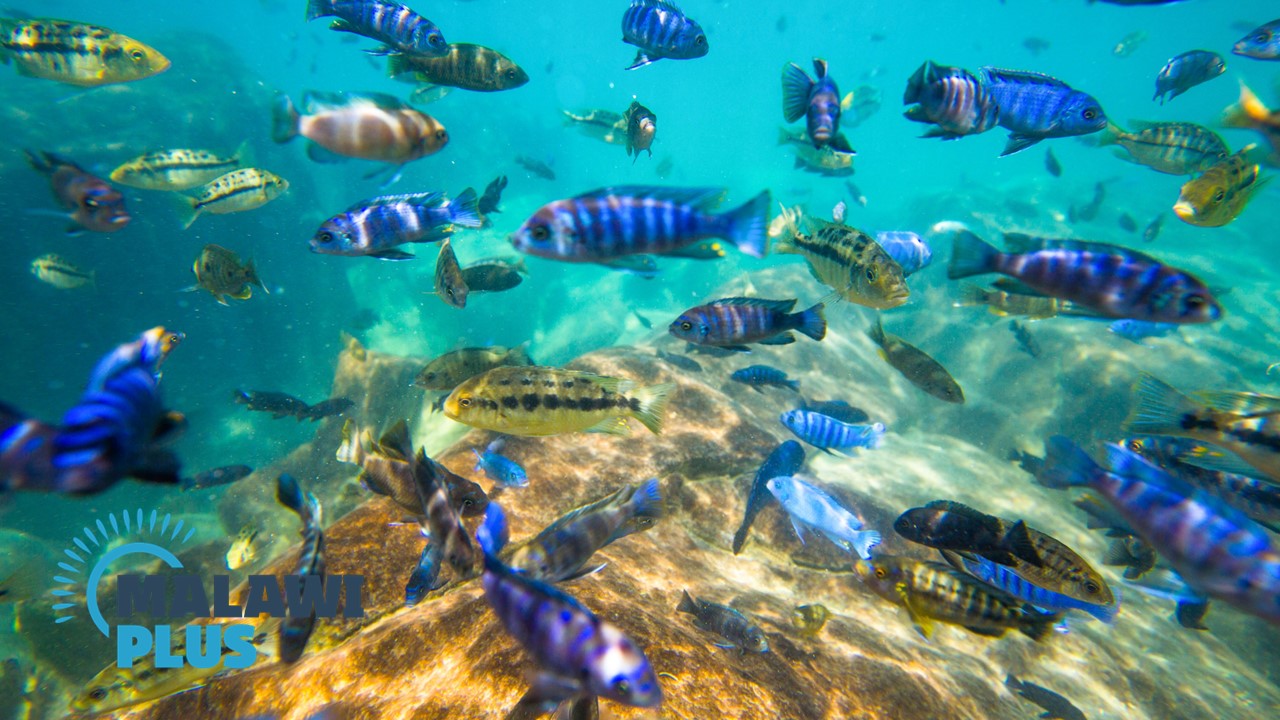
Lake Malawi, with its golden sandy beaches and sparkling clear blue waters, was described in David Livingstone’s diary as ‘the Lake of Stars’.
Lake Malawi is the third largest lake in Africa and the ninth largest in the world, with a maximum depth of 700m in the northern part of the Lake, making it the third deepest lake in the world.
Lake Malawi National Park which is the world’s first freshwater national park and a UNESCO World Heritage Site, is home to abundant and colourful cichlids.
The Lake is thought to have nearly 1,000 species of cichlids, making it the single largest lake in the world with the largest variety of fish species.
This exceeds the number of freshwater fish species in Europe and North America combined.
Not only is Lake Malawi a scenic wonder with rich variety of fish, it is also one of the best freshwater lakes in the world, offering a wide range of water sports.
Swimming, water skiing, sailing, kayaking, parasailing and boating are just a few of the water sports on offer all year round, and they are a magnet for visitors.
The crystal-clear waters of Lake Malawi are also ideal for scuba diving and snorkelling.
The water is remarkably clear during the dry season (especially from June to December), and visibility can even reach up to 30 metres.
With a snorkelling mask on, you can easily spot the vibrant fish that live in the Lake and feed from the rocks on the shore.
Rather than hiding, the fish will swim around you, approaching you and greeting you.
From the MV Ilala, which is also the Lake’s ferry, to sailing on an ocean-going yacht or exploring by kayak, Lake Malawi is the perfect location for water sports enthusiasts.
Cruises to the upper reaches of the mighty Shire River are also available.
1. Scuba Diving
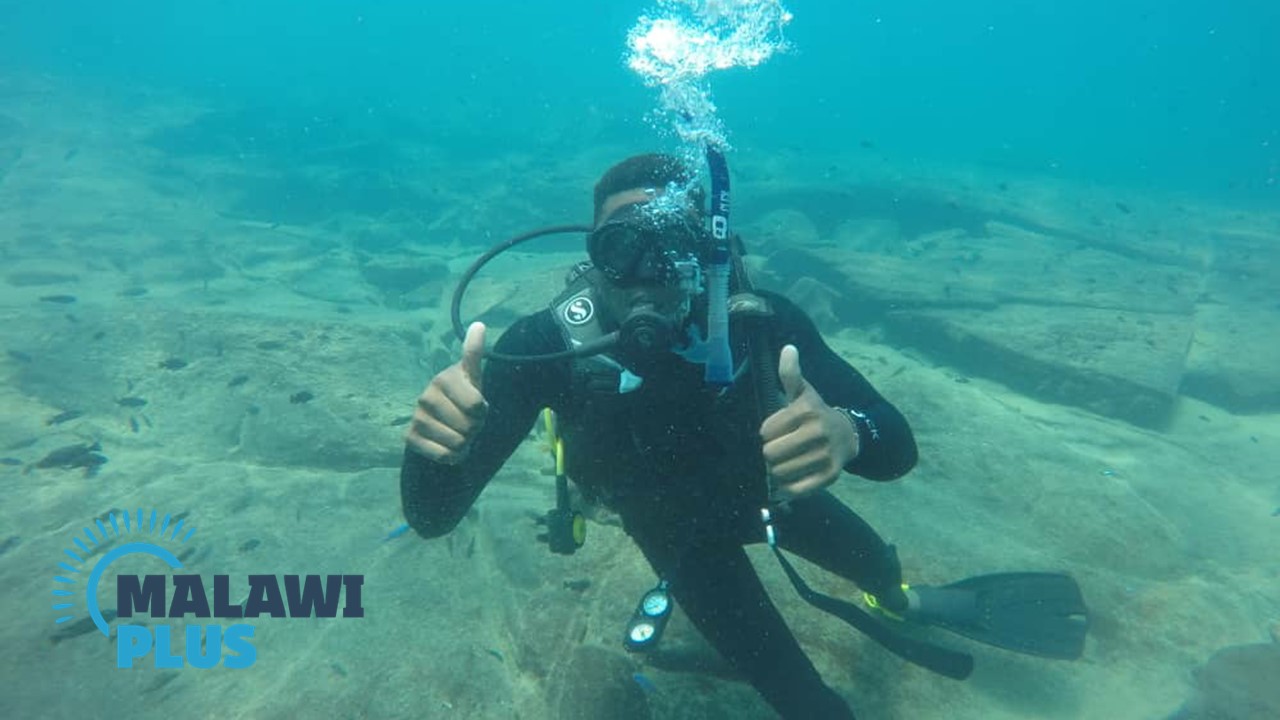
With dramatic rock formations, caves and cliffs creating an attractive terrain for underwater diving, Lake Malawi is known as one of the world’s premier freshwater diving destinations.
It has more species of freshwater fish than any other lake on earth (over 1,000) and more freshwater fish than Europe and North America combined.
You can dive all year round, but the best time to dive is during the dry season from August to December, when the lake is at its calmest, the clarity is 20-30m, there is little wind and the water temperature is as high as 30°C.
This is the breeding season for cichlids and their mouth-breeding phenomenon is one of the most fascinating phenomena seen on Lake Malawi dives.
Mothers protect their eggs in their mouths until they are large enough to fend for themselves.
Also, night diving in Lake Malawi is considered one of the most unique diving experiences on earth, as schools of dolphinfish use torchlight to catch cichlids, their prey.
You can also see catfish as large as two metres in length coming up from their burrows in search of food.
Catfish are very curious and will approach divers who enter their territory, especially during the breeding season.
Malawi is said to be one of the most reasonably priced countries in Africa for PADI (Professional Association for Diving Instructors) certification.
Dive schools in Nkhata Bay and Cape Maclear offer basic courses including a half-day course for beginners and a four-day ‘PADI Open Water Course’, as well as for those already qualified, refresher courses, advanced courses and specialty diving are offered.
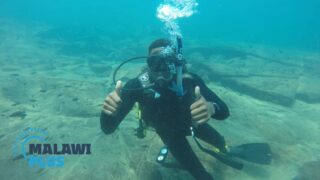
2. Snorkelling
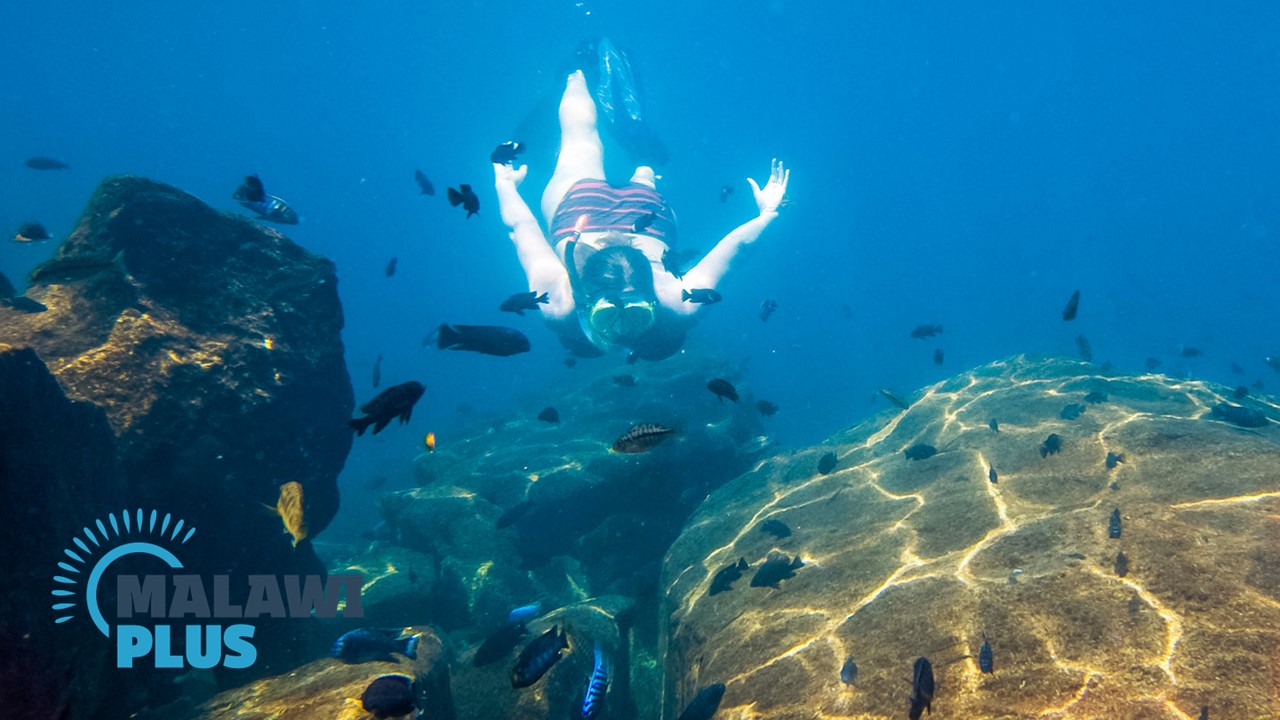
Lake Malawi perfectly combines all the elements required for snorkelling, opening up a kaleidoscope of underwater worlds for an amazing experience.
Swimming with thousands of dazzlingly coloured fish, within arm’s reach, is one of the most popular activities in Lake Malawi and will become an unforgettable memory of your life.
Snorkelling involves adding a breathing pipe, called a snorkel, to your mouth, wearing goggles and fins and swimming in relatively shallow water.
Whether you’re not a good swimmer or a child, you can wear a life jacket and see many colourful fish just floating in the water.
Unlike scuba diving, snorkelling does not require a license.
Snorkelling can be enjoyed on any lakeshore and most lodges and hotels have equipment available for guests to use at affordable prices.
Lake Malawi has very little vegetation and organic matter, so the sandy and rocky tops of the lake bottom are exceptionally clear.
Snorkelling is possible all year round, but the best season is from August to December when the lake is particularly clear and the water temperature rises to nearly 30°C, making the lake very calm and perfect for snorkelling.
Float your body above the water, get lost in this crystal clear paradise and let all your worries go.
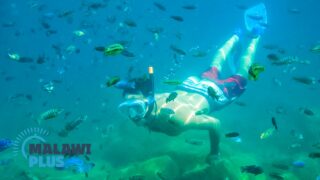
3. Boat Trips

Cruise Lake Malawi, with its golden sandy beaches and sparkling clear blue waters, described by Scottish missionary David Livingstone as ‘the Lake of Stars’.
Lake Malawi offers a variety of options for boat trips, from a few hours’ boat trip on a traditional wooden boat or modern speedboat, to a multi-day cruise on a large cruise ship sailing around Lake Malawi.
Take a few hours’ boat trip and visit several snorkelling spots, explore uninhabited islands, enjoy fishing, watch the African Fish Eagle stalk its underwater prey, test your mettle at cliff jumping, or sip wine while watching the sun set over Lake Malawi.
The purpose of the trip is varied.
For those wishing to sail around Lake Malawi by ship, the MV Ilala Ferry is a popular choice.
This ship has been used by locals as a cargo-passenger ship since 1951 and is the only cruise ship that sails on Lake Malawi.
It is 50 metres long, weighs 400 tonnes and travels between Monkey Bay in the south and Chilumba in the north, taking around three days to travel from one end of the lake to the other.
It has a capacity of about 400 passengers and offers passage and rooms for tourists, as well as a bar and restaurant.
Boat safaris are also offered in Liwonde National Park and on the Shire River, which flows through the Majete Wildlife Reserve.
These boat safaris are a beloved activity that allows visitors to view a variety of wildlife from the water, including hippos and crocodiles while elephants and giraffes take a leisurely stroll and birds rest at the water’s edge.
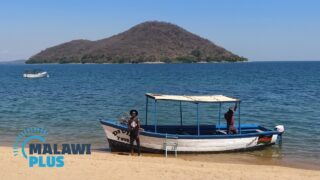
4. Kayaking

The clear turquoise waters of Lake Malawi are ideal for kayaking, as the tides are slower than those of the sea.
Most lodges and hotels on Lake Malawi rent kayaks to their guests.
Watch the colourful cichlids and majestic Fish Eagle as you glide through the calm waters of Lake Malawi, or go on an adventurous island hopping trip.
Kayaking is becoming increasingly popular, especially in Lake Malawi National Park, a UNESCO World Heritage Site.
The two uninhabited islands in the park, Mumbo and Domwe, are stunningly unique and have never been inhabited and remain unspoiled.
Paddling your own kayak through the 8km separating these two islands can be an exciting experience.
Soak up the sun and embark on a great adventure on the water.
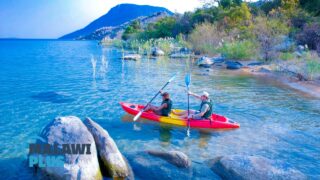
5. Sailing

Go on a sailing safari on the magnificent Lake Malawi.
Sailing is a water sport that uses the wind, rather than an engine, to propel the boat forward.
It is popular both recreationally and competitively and has even been adopted as a summer Olympic sport.
Since the waters of Lake Malawi have no currents, this makes them suitable for sailing.
Although the wind is not very strong, there is always a breeze for sailboats.
Many lakeside lodges offer sailboats for hire, so you can experience the freedom of sailing with the wind in your face.
A sailing highlight in Malawi is the Lake Malawi Sailing Marathon (LMSM), held annually in July/August.
The event has been running since 1984 and started as an idea by some sailors to sail north on Lake Malawi with deckchairs on the hull for casual sailing.
This international event consists of a series of day stages, covering a distance of 560 km northwards over 8 days.
The LMSM is not just a race on the lake, but also a challenge, an adventure, an opportunity to experience the beautiful country of Malawi and to enjoy the fellowship that is shared on this sailing safari.
The large number of sailors who visit the shores of Lake Malawi each year to take part in this competition confirm its appeal.
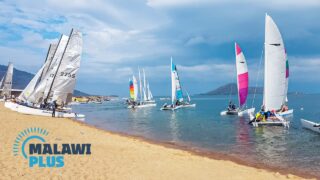
6. Stand-up Paddle Boarding (SUP)
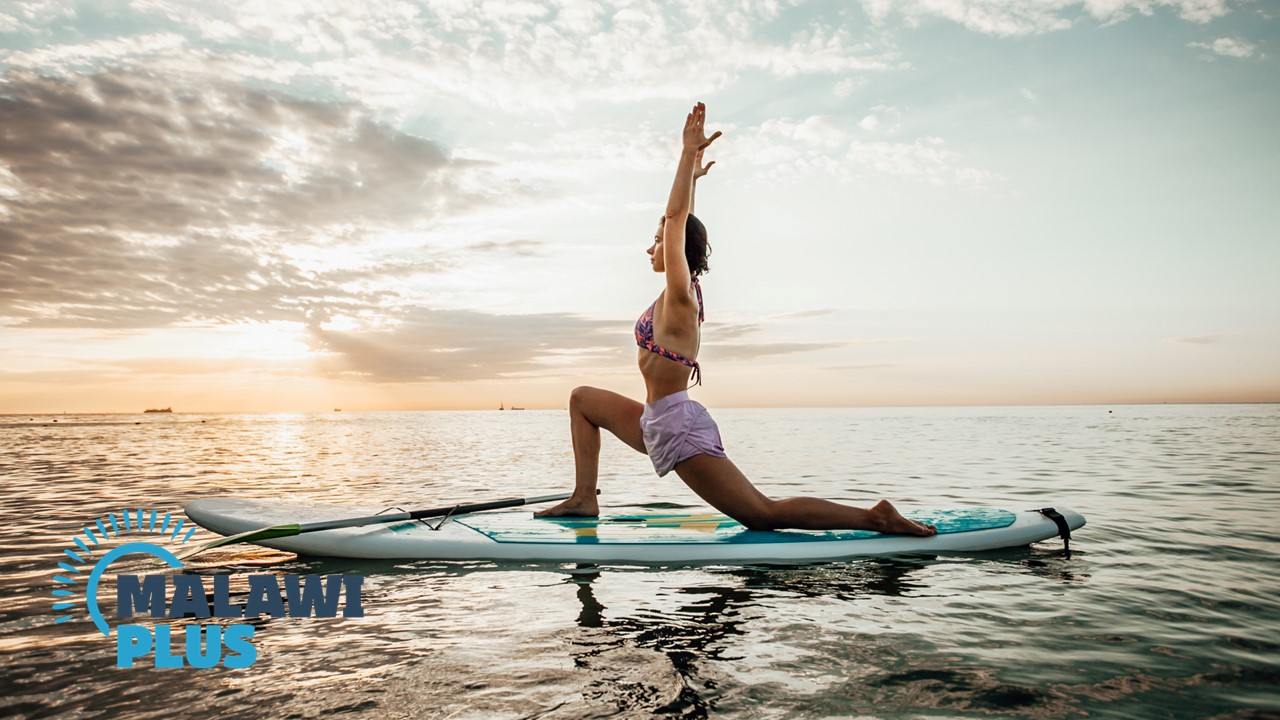
Stand-up paddle boarding, also known as SUP, is a water sport that originated in Hawaii where the rider stands on a board and uses a paddle to navigate through the water.
With the help of a specially designed, highly floatable stable board and a trusty paddle, balance is achieved and you don’t need to be a pro to make easy progress.
Many people take up this sport for the exercise benefits, since it also helps to develop core strength and balance.
Aside from cruising with a paddle, you can also enjoy yoga, fitness and fishing on the board, you can even take your pets along for the ride, or simply lie down for a nap on the calm surface of the lake.
Feel the cool breeze blowing over the sparkling blue waters of Lake Malawi, paddle along the horizon and enjoy the dazzling views of the golden beaches from above the water.

7. Windsurfing
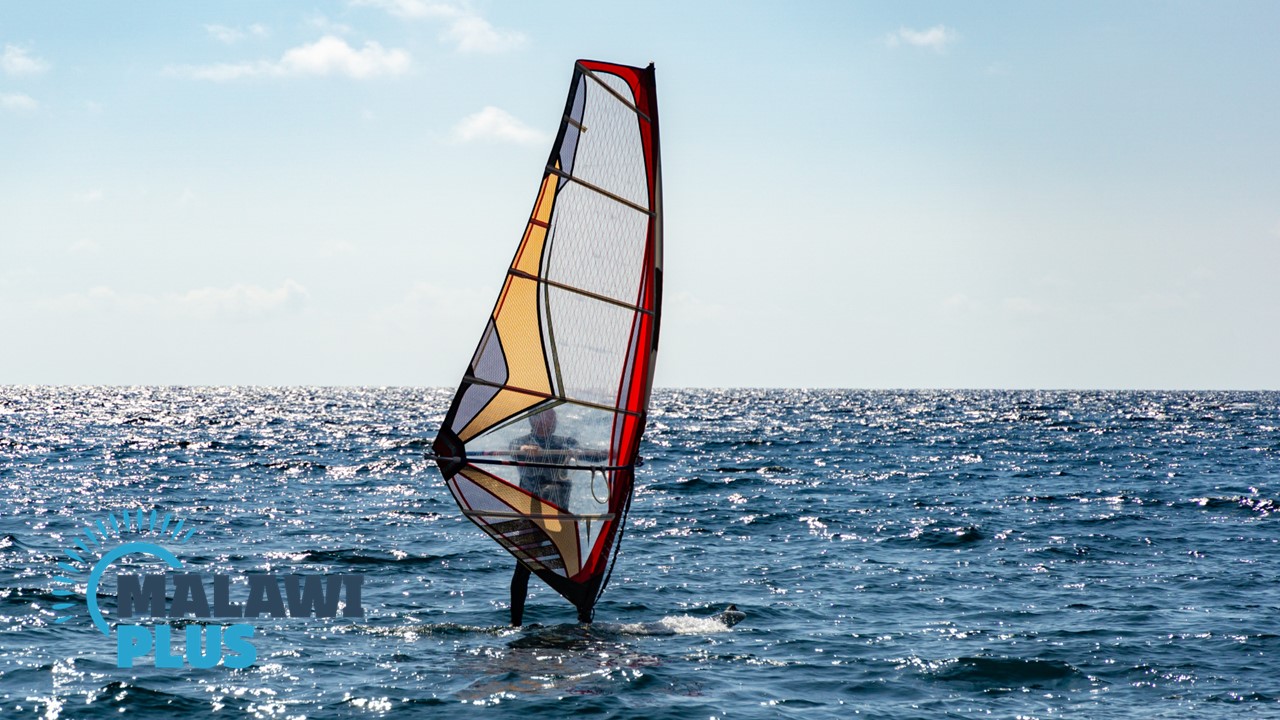
Windsurfing is a water sport that uses a sail attached to a sailboard to catch the wind and glide on the surface of the water.
The main attraction of windsurfing is that it does not use any artificial power, but only the force of the wind, which allows you to feel the majestic nature of Lake Malawi directly.
As a recreational sport, it can be enjoyed by a wide range of people, from beginners to children and elderly people.
Windsurfing has been an official Olympic sport since 1984.
Although windsurfing is a fairly new water sport in Malawi, it is becoming increasingly popular.
Why not head out to Lake Malawi and try windsurfing on the magnificent lake?
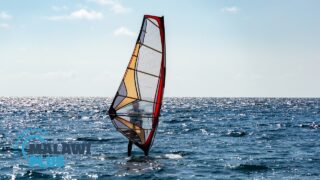
8. Water Skiing
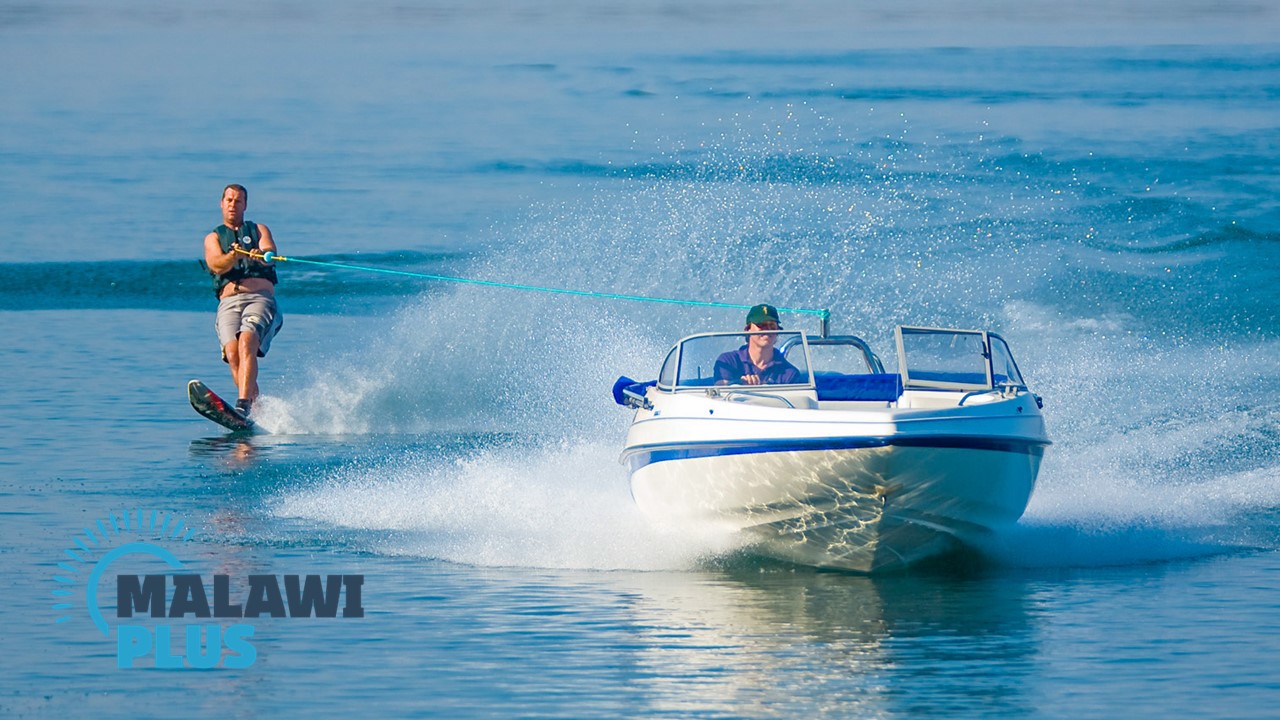
Feel the exhilarating breeze as you ski gracefully across the water on the sparkling Lake Malawi.
Water skiing is a water sport in which the skier holds a rope handle attached to the back of a boat and skis on the water.
Water skiing requires a strong sense of balance, so with the guidance of a trained instructor, you’ll be dashing across the water and using your legs and knees with ease in no time.
Water skiing is available on Lake Malawi at several lodges and hotels.
Apart from skiing, there are also a variety of rides available where guests can stand or sit while being pulled behind a boat.
You will be drawn to this fun water sport activity once you have experienced the speed.
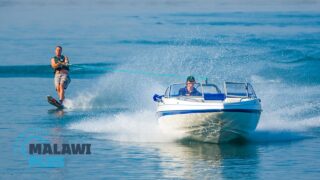
9. Rafting
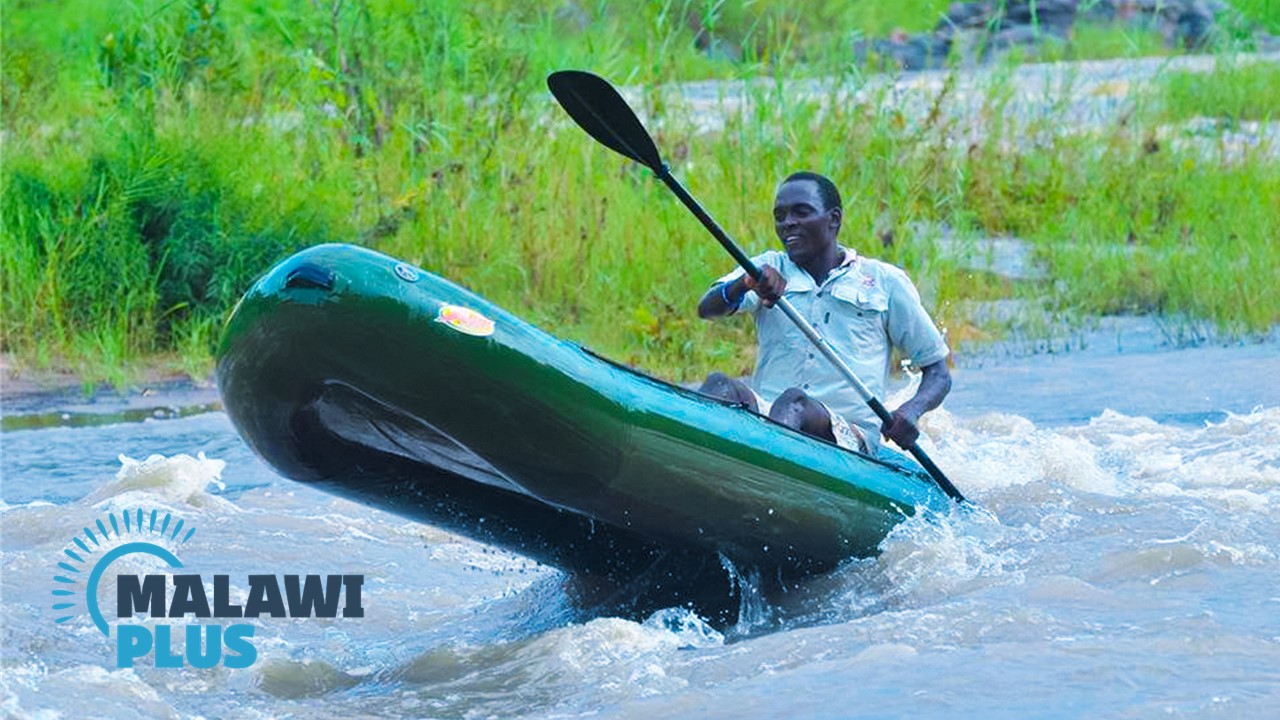
Rafting is a recreational outdoor activity involving the use of a boat or inflatable raft to travel down river rapids.
It can be done alone, but is a great experience to enjoy with friends and family.
One of the best places to experience rafting in Malawi is on the Bua River in the Nkhotakota Wildlife Reserve.
Enjoy the tranquility and natural beauty of the Bua River while looking out for diverse bird activity, riverside waterfalls and thirsty wildlife.
With your adrenaline flowing, a rafting adventure will make your trip to Malawi even more thrilling.
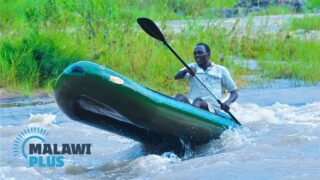
10. Angling
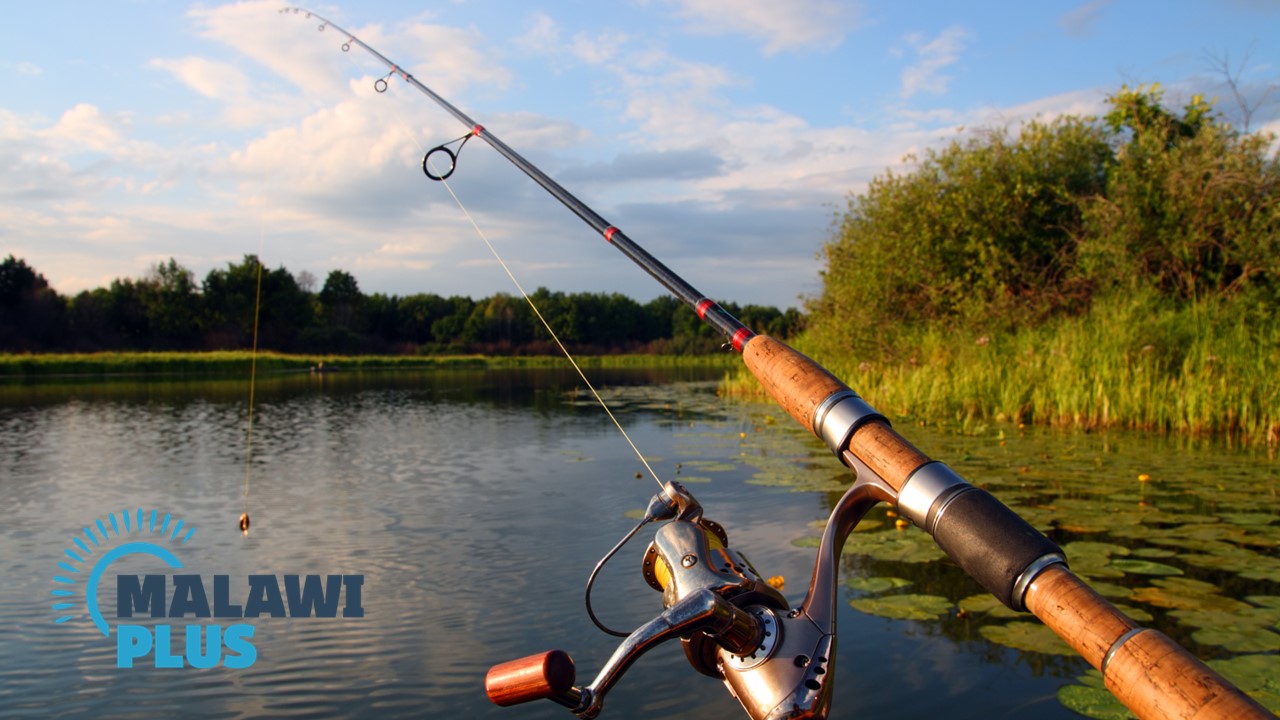
Angling is a type or technique of fishing using ‘angles’ (fish hooks) for sport or leisure.
Malawi has an amazing variety of rivers, lakes and reservoirs, as well as Lake Malawi which is the third largest lake in Africa and is known to have the largest number of freshwater fish species in the world, making the country a rewarding angling destination.
Fishing rods and some equipment can be hired from lakeside hotels and lodges, and boats can be arranged in advance.
It is also possible to obtain locally made flies, but it is advisable to bring your own equipment.
Angling is possible all year round, but is most suitable from November to April during the rainy season, when there is an increase in fish species in the various waters.
The lake is home to many species of game fish.
The central and northern areas are rich in ferocious tigerfish and lake salmon which offer the most exciting sport.
River fishing is best along banks with thick reeds and weeds; the Bua River through the Nkhotakota Wildlife Reserve and the Shire River through the Majete Wildlife Reserve are excellent angling spots.
Trout fishing is also a popular sport in the streams and dams of the Zomba Plateau, Nyika Plateau and Mulanje Massif, where only fly fishing is permitted.
To protect Malawi’s beautiful ecosystem, please ‘catch and let go’ when you catch a fish and return it to the water.
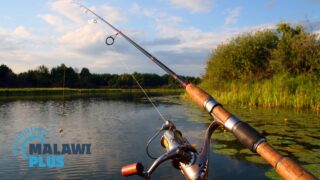
Wildlife
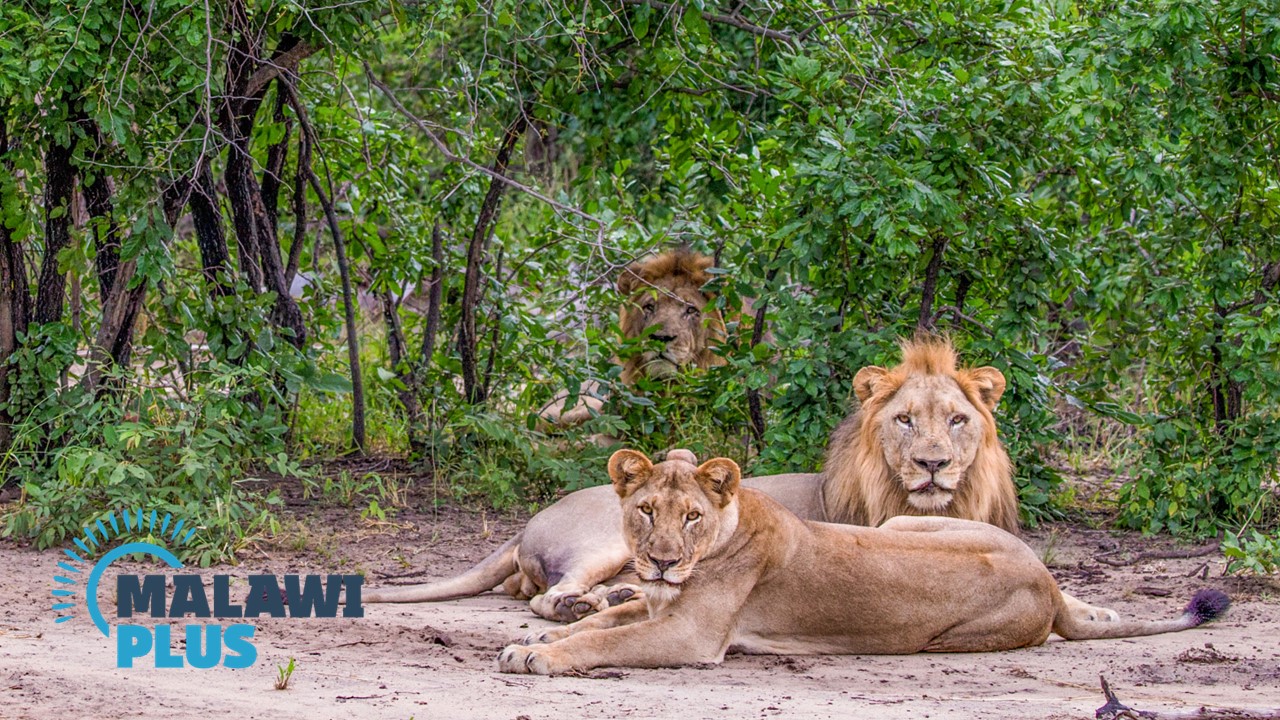
In recent years, Malawi has gained popularity among wildlife lovers as an upcoming destination.
With the excellent collaboration between the Department of National Parks and Wildlife (DNPW) and African Parks, some innovative ideas on wildlife management and a conservation program to stop poaching, the wildlife numbers have increased and Malawi has been transformed into an exciting safari destination where a wide variety of wildlife can now be observed, including the Big Five.
Malawi has five national parks and four wildlife reserves, each with unique features.
Away from the crowds and in unspoilt wilderness, you can explore by safari vehicle, walking, trekking or by boat for an unforgettable safari experience.
This is the result of nearly two decades of hard work by the DNPW and African Parks.
In 2003, the first project of the DNPW and African Parks was the Majete Wildlife Reserve in southern Malawi, where poaching was so rampant that elephants, rhinos, lions and buffaloes had all been hunted down and only a few antelope remained.
This empty state of Majete has since been transformed into a wildlife wonderland: rhinos were introduced in 2003, 70 elephants in 2006, 4 lions in 2012 and 13 giraffes in 2018, 5 cheetahs in 2019, and 14 African dogs and a variety of animals were reintroduced in 2021.
A total of nearly 5,000 animals have been reintroduced to date, making Majete Malawi’s greatest wildlife treasure trove and the only ‘Big Five’ reserve in Malawi.
Since the initial introduction of rhinos and elephants, not a single animal has been poached in the reserve. Majete Wildlife Reserve is a conservation success story in Malawi.
Following the success of Majete, African Parks took on the collaborative management of Liwonde National Park and Nkhotakota Wildlife Reserve in 2015.
In Liwonde, 7 cheetahs were introduced in 2017, 10 lions in 2018 and a further 17 black rhinos in 2019. This translocation of 17 black rhinos was one of the largest international black rhino translocations.
Currently, the cheetahs introduced in 2017 have doubled in number with the birth of some cubs.
Exciting times are also ahead for Nkhotakota: from July 2016 to August 2017, a total of more than 520 elephants and 2000 other animals including sable, waterbuck, kudu and impala were welcomed from Liwonde and Majete.
This was the largest elephant translocation in the history of nature conservation.
Poaching is now a thing of the past, thanks to well-trained and equipped ranger teams and strong community engagement.
11. Nyika National Park (Rumphi)
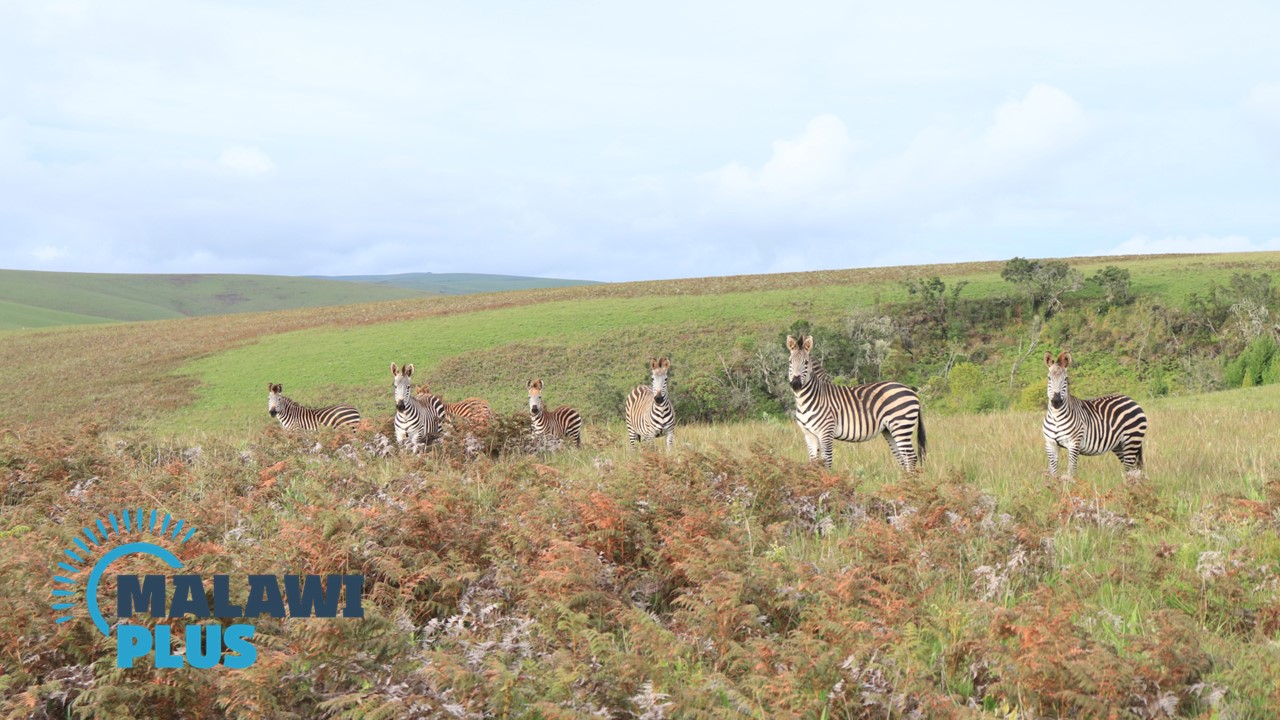 Located in northern Malawi, Nyika National Park covers an area of 3,200km2 and is the largest national park in Malawi.
Located in northern Malawi, Nyika National Park covers an area of 3,200km2 and is the largest national park in Malawi.
It is also Malawi’s oldest national park, having been established in 1965.
Almost the entire Nyika Plateau, which rises over 2,500m above sea level, is designated as a national park, and the landscape of rolling hills, grasslands and flowers is breathtakingly stunning, leaving visitors speechless.
The name Nyika means “Where the water comes from”, since the plateau is Malawi’s most important catchment area.
It is also home to the richest orchid population in south-central Africa, with more than 200 species in bloom during the rainy season.
Eleven of these species are endemic to Nyika, and a further 27 are found nowhere else in Malawi.
Nearly 100 species of mammal have been recorded in Nyika National Park, including large herds of antelope and the largest population of leopard in Central Africa.
You can also see eland, roan, zebra, buffalo and elephant. Moreover, night drives also offer the possibility of encountering hyenas and other small nocturnal predators.
Nyika is also one of Malawi’s leading birding destinations, with over 400 bird species and four species found in Nyika that have not been recorded elsewhere in Malawi (Yellow Mountain Warbler, Chirring Cisticola, Ayres Cisticola and Mountain Marsh Widow).
The best way to appreciate the majestic scenery of Nyika is by taking a three-day hike to Livingstonia.
Mountain bikes can also be hired at the lodge.
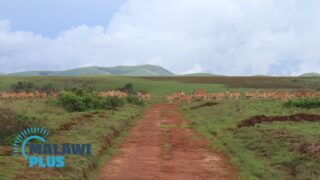
12. Liwonde National Park (Machinga)
 Liwonde National Park is located approximately 190km north of Blantyre and it covers an area of 548km².
Liwonde National Park is located approximately 190km north of Blantyre and it covers an area of 548km².
The combination of the Shire River which is the only outlet of Lake Malawi, and the rich mopane and grassland habitats provide a suitable environment for wildlife and birds, probably making Liwonde the most popular national park in Malawi.
Liwonde National Park has been managed by African Parks since 2015 which continues to transform Liwonde into a first-class safari destination.
Between July 2016 and August 2017, Liwonde contributed to the largest elephant translocation in history.
Out of a population of approximately 800 elephants, 336 elephants were relocated to the Nkhotakota Wildlife Reserve, contributing to the recovery of wildlife in the Nkhotakota Wildlife Reserve.
In 2017, seven cheetahs were reintroduced to Liwonde National Park for the first time in nearly 100 years.
Since then, the birth of eight cheetah cubs has been confirmed, more than doubling the number of cheetahs already in the park.
In 2018, 10 lions were also reintroduced from South Africa and Majete Wildlife Reserve.
In 2019, one of the largest ever international black rhino relocations took place, with 17 black rhinos relocated from South Africa to Liwonde.
Furthermore, in 2021, 14 African Wild Dogs were successfully relocated from South Africa and Mozambique to Liwonde National Park and Majete Wildlife Reserve.
This reintroduction is an international effort to protect the endangered African Wild Dog.
In addition, Liwonde National Park is home to an estimated 12,000 large mammals, including hippos, crocodiles, African buffalo, waterbuck, impala, common eland, sable antelope, bushbuck, kudu, hyena and warthog.
It is also one of Malawi’s leading birding spots and is home to around 400 bird species, including Pel’s Fishing Owl, African Skimmer, Brown-breasted Barbet, Lilian’s Lovebird and Bohm’s Bee-eater.
In addition to walking and driving safaris, Liwonde offers one of the best boat safari experiences in Africa.
It is also possible to hire a community guide at the main gate to show you around the park.
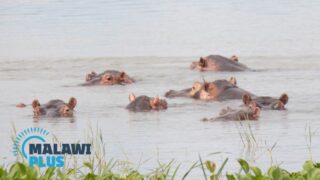
13. Lengwe National Park (Chikwawa)
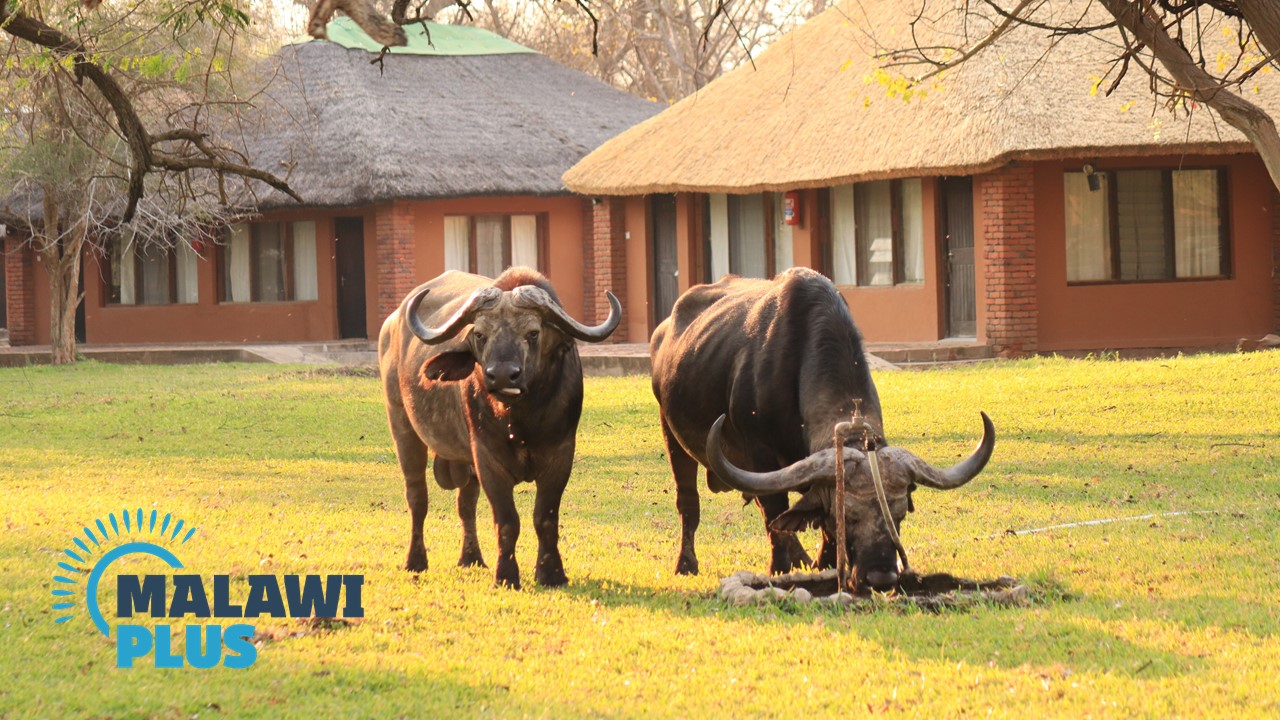 Lengwe National Park, 80 km south of Blantyre on the border with Mozambique, was first set aside as a game reserve in 1928 to protect the large mammals of the Lower Shire Valley, particularly the nyala antelope and their habitat.
Lengwe National Park, 80 km south of Blantyre on the border with Mozambique, was first set aside as a game reserve in 1928 to protect the large mammals of the Lower Shire Valley, particularly the nyala antelope and their habitat.
It was subsequently designated a national park in 1970 and expanded to its current size of 887 km² in 1975.
The park is managed by the Department of National Parks and Wildlife (DNPW).
Lengwe National Park may seem a bit underwhelming after spending a day or two in Majete Wildlife Reserve.
This is because the wildlife found in the park has not been boosted by reintroduction schemes and is all in its natural habitat.
Lengwe National Park was originally Malawi’s most northerly nyala habitat.
Annual game counts conducted by the Wildlife and Environment Society of Malawi have shown a steady increase in the population of the main antelope species in the park, especially the rare nyala.
The park is also home to between 2,000 and 3,000 beautiful antelope and kudu.
On game drives, it is easy to spot Livingstone suni, bushbuck, impala, aardvark, yellow baboon, blue monkey, warthog, bush pig, velvet monkey and buffalo.
Lengwe is fairly dry outside the rainy season and the only stable source of water is rain.
This means that animals take advantage of the few puddles that are constantly supplied with water, and the dry season is ideal for game watching as many animals come to the water holes.
The Park is also home to a variety of bird species, with over 350 species recorded, including the colourful endemic Bohm’s Bee-eater, Crested Guineafowl, Vanga Flycatcher and Yellow-billed Hornbill.
Lengwe National Park is an ideal day trip from Blantyre.
The park’s restaurant offers a great place to eat while taking in the wildlife and scenery.

14. Kasungu National Park (Kasungu)
 Located west of Kasungu town, along the border with Zambia, Kasungu National Park is the closest national park to Lilongwe and was declared a national park in 1970.
Located west of Kasungu town, along the border with Zambia, Kasungu National Park is the closest national park to Lilongwe and was declared a national park in 1970.
With an area of 2,316 km², it is Malawi’s second largest national park after Nyika National Park. The park was once a favourite destination of the first President of Malawi, Dr. Hastings Kamuzu Banda.
Kasungu National Park consists of miombo woodlands, grasslands and rolling hills, with a small lake and a wide marshy river.
The Dwanga and Lingadzi rivers are the main sources of water for the ecosystem, especially during the hot dry season from September to November, when water levels drop and animals are forced to move closer to the remaining water bodies in the park.
Kasungu National Park also contains several prehistoric sites, including iron-smelling kiln, rock paintings and the remains of a fortified village.
Climb the hill known as Black Rock for breathtaking views of the entire park with endless vistas.
Although the animal density is not as high as in Nyika, but elephants, various antelopes and small herds of buffalo and zebra can be seen.
Predators such as leopards, hyenas, servals and jackals are also present, but are not seen often.
There is also a significant number of hippos in the Lifupa Dam.
Just like in other parts of Malawi, bird watching is also prevalent at Kasungu National Park, with the ideal time to go being from June to September.
Kasungu National Park has a lodge and game drives and guided walks are also available, but you may easily drive about without a guide if you have a decent map.
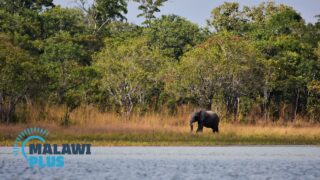
15. Majete Wildlife Reserve (Chikwawa)

Majete Wildlife Reserve which was established in 1955 is located in southern Malawi, just south of Blantyre.
The reserve is the only park in Malawi where the ‘Big Five’ can be seen, and game drives and guided tours are available.
The story of Majete Wildlife Reserve is perhaps the most intriguing of all the parks in Malawi.
Until 2003, when the Malawi Government’s Department of National Parks and Wildlife (DNPW) and African Parks initiated a project to rehabilitate the Majete Wildlife Reserve, the law was not adequate enough to deal with poaching so elephant, rhino, lion and buffalo had all been hunted out, leaving less wildlife and only a few remaining antelopes.
This empty Majete was transformed into a wildlife wonderland: a mass translocation of wildlife began in 2003 and by March 2012, 2,559 animals of 14 species had been reintroduced, including the Big Five: leopard, elephant, buffalo, black rhino and lion.
By 2017, elephants had bred to more than 430, and during the historic translocation of 520 elephants to the Nkhotakota Wildlife Reserve, 200 elephants were also translocated from Majete, contributing to the repopulation of the reserve.
In 2018, 4 new lions, 2 males and 2 females, were reintroduced from South Africa to increase the genetic diversity of the population, and 5 cheetahs were introduced in 2019.
In July 2021, 14 African wild dogs were relocated from South Africa and Mozambique to Liwonde National Park and Majete Wildlife Reserve.
This was a historic project to protect the African Wild Dog, of which it is estimated that only 6,600 animals and 700 breeding pairs remain on the continent.
A total of nearly 5,000 wildlife have been reintroduced since then, but not a single animal has been poached in the reserve since 2003.
Majete Wildlife Reserve is a conservation success story in Malawi.
Located 1.5 hours’ drive from Blantyre, the reserve is ideal for a day visit.
Get away from the hustle and bustle of the city and go exploring at Majete Wildlife Reserve, the only place in Malawi where the Big Five are all in one place.
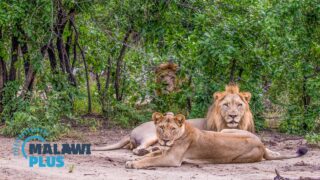
16. Nkhotakota Wildlife Reserve (Nkhotakota)
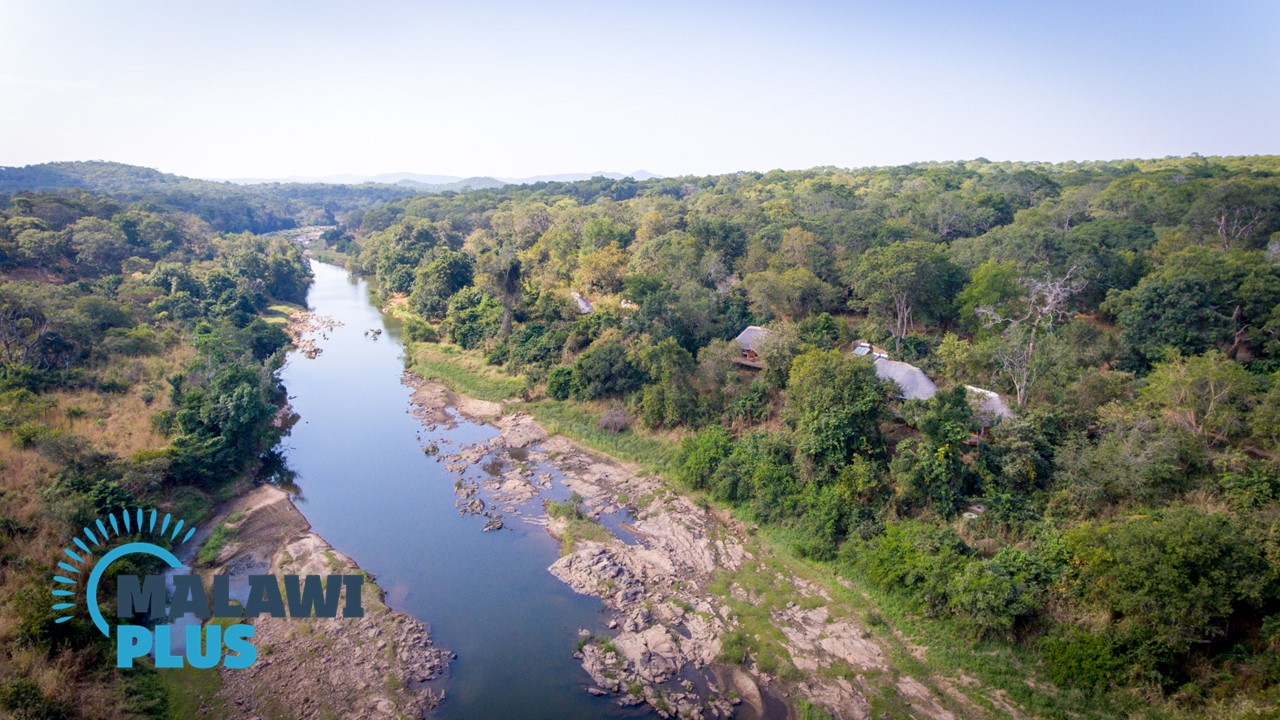 Located in central Malawi, the 1,802 km² Nkhotakota Wildlife Reserve is Malawi’s largest and oldest reserve, having been established in 1954.
Located in central Malawi, the 1,802 km² Nkhotakota Wildlife Reserve is Malawi’s largest and oldest reserve, having been established in 1954.
Nkhotakota Wildlife Reserve has been managed by African Parks in collaboration with Malawi’s Department of National Parks and Wildlife (DNPW) since 2015 and its exciting future is very much in the spotlight.
The rugged terrain ranges from an altitude of 500m in the east to 1,63 m at the summit of Chipata Mountain, and the plateau is dotted with streams and waterfalls, making it a great spot for fishing, canoeing and river rafting.
Due to years of poaching and lawlessness, the Nkhotakota Wildlife Reserve was home to more than 1,500 elephants in the 1990s, but by 2015 the population had dwindled to less than 100.
However, between July 2016 and August 2017, African Parks successfully relocated a total of 520 elephants and 2000 animals, including sable, waterbuck, kudu and impala, from Liwonde National Park and Majete Wildlife Reserve to Nkhotakota Wildlife Reserve.
This was one of the largest relocations of elephants ever recorded in the history of the world.
The elephants’ return to the park has established it as an important ecotourism attraction.
The park also offers a wide range of activities, including fishing, canoeing and rafting.
The Bua River, which flows through the reserve, is home to lake salmon and offers exciting catch-and-release fishing.
On boat trips, you may see countless elephants bathing on the riverbanks.
Or on walking safaris, explore the pristine African wilderness with an armed guide, pursuing animal tracks and observing the many species of plants.
Alternatively, climb Chipata Mountain, the highest peak, and you will be rewarded with spectacular views of Nkhotakota across the horizon.
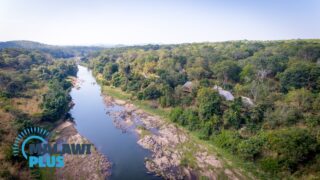
17. Vwaza Marsh Wildlife Reserve (Rumphi)
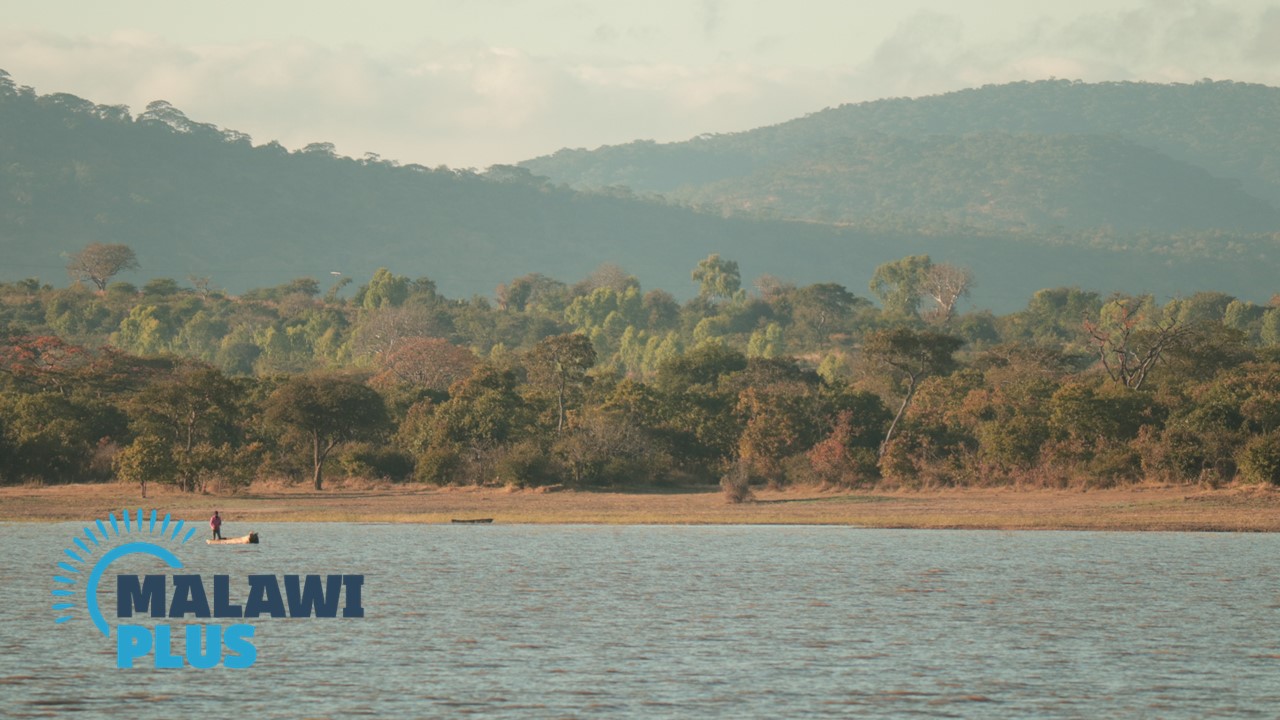 Located north-west of Mzuzu, on the border with Zambia, Vwaza Marsh Wildlife Reserve is a 978km² reserve which was designated in 1977.
Located north-west of Mzuzu, on the border with Zambia, Vwaza Marsh Wildlife Reserve is a 978km² reserve which was designated in 1977.
In the 19th and early 20th centuries, Vwaza Marsh was one of the most famous places of ivory collection.
Today, it is one of the best places in Malawi to see elephants and buffaloes.
If you visit Nyika National Park by car, be sure to stop off at Vwaza Marsh Wildlife Reserve at the foot of Nyika Plateau.
Both Nyika and Vwaza offer the ultimate safari experience in Malawi.
Vwaza Marsh Wildlife Reserve comprises of forests, grasslands and marshy plains, with several streams flowing into Lake Kazuni near the main entrance to the reserve.
Lake Kazuni is a small lake by Malawian standards, but very attractive for wildlife: it is home to more than 500 hippos and on most days hippos can be seen poking their heads out of the water.
Crocodiles can often be seen basking on the lake’s sandy beaches.
It is estimated that there are more than 1,000 buffalo in the vicinity, but their roaming habits mean that sightings are not easy to predict.
Hundreds of elephants inhabit the area and it is not uncommon to see herds of 30-40.
There are few predators, but lions, leopards and wild dogs have been spotted in the past.
A variety of other antelopes are also present, including the roan, greater kudu, Lichtenstein’s hartebeest, eland and impala.
With around 300 bird species, bird watching is also popular in the park.
It is one of the best places in Malawi to view waders such as stork, heron and white-faced tree duck.
Wildlife viewing is best done on foot around Lake Kazuni or on wilderness trails.
You can either drive around the reserve in your own vehicle or arrange for a guide at the entrance to the reserve.
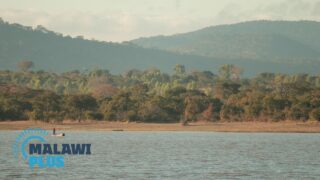
18. Kuti Wildlife Reserve (Salima)
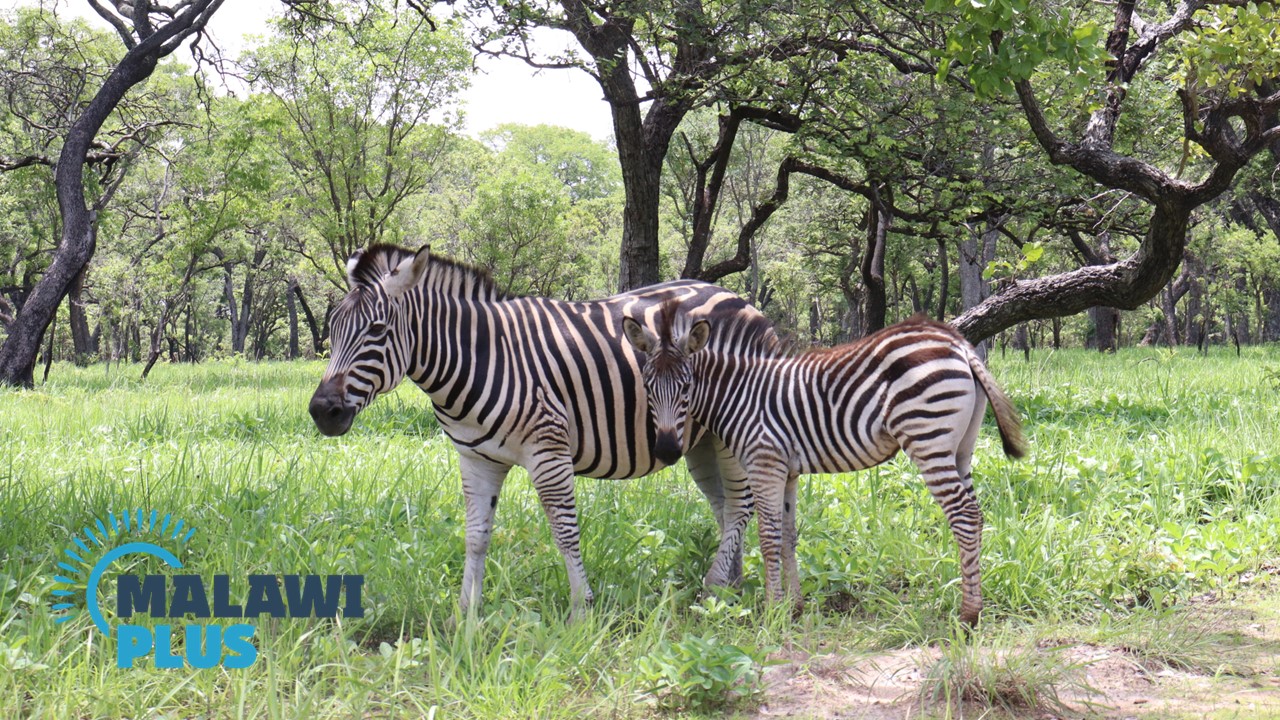
Kuti Wildlife Reserve is a community-owned wildlife reserve situated in Salima.
The reserve covers 2,000 hectares, and less than 1.5 hours from Lilongwe and 30 minutes from Senga Bay.
The revenue raised is used for projects such as tree planting, rehabilitation of boreholes, and clinics and seedling production to help the surrounding villages.
The reserve is also the primary destination for rehabilitated animals from the Lilongwe Wildlife Centre that are ready for release into the wild.
Kuti was established in the 1990s after having been decommissioned as a government cattle ranch, and set as a wildlife reserve in 2005.
It has a diverse habitat ranging from brachystegia and miombo woodland through to grasslands, wetlands, and marshes.
Kuti Wildlife Reserve is home to a huge variety of free-roaming wildlife.
There are about 10 Reedbuck, 13 Eland, 15 Oribi, 15 Wildebeest, 20 Bush pig, 20 Warthog, 20 Kudu, 20 Nyala, 35 Duiker, 40 Impala, 50 waterbuck, 60 Baboons, 80 Vervet monkeys, 80 Bushbuck, 90 Zebra, over 120 Sable antelopes and one rescued Giraffe at Kuti.
There are no large predators and elephants in Kuti, so you can explore and take in your surroundings at your own pace on foot or by bike, without the need for a vehicle or scout.
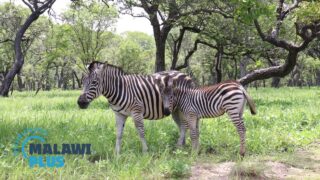
19. Game Haven (Thyolo)

Located in southern Malawi, 25km from Blantyre, Game Haven Lodge is a unique retreat that combines tourism and wildlife conservation in the private Chimwenya Game Park.
The Game Park covers a total area of 520 acres and is home to 10 animal species including giraffe, eland, zebra, waterbuck, duiker, blue wildebeest sable, nyala, impala and jackal.
Experience playing golf on a beautifully manicured nine-hole course where wildlife roam freely.
A range of exciting activities are offered free of charge to guests, including game drives, guided game walks, mountain biking, bird watching, children’s playground, fishing and an 18-metre pool.
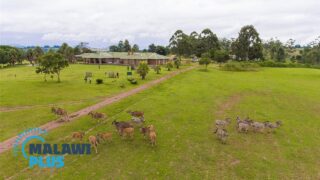
Bird Watching
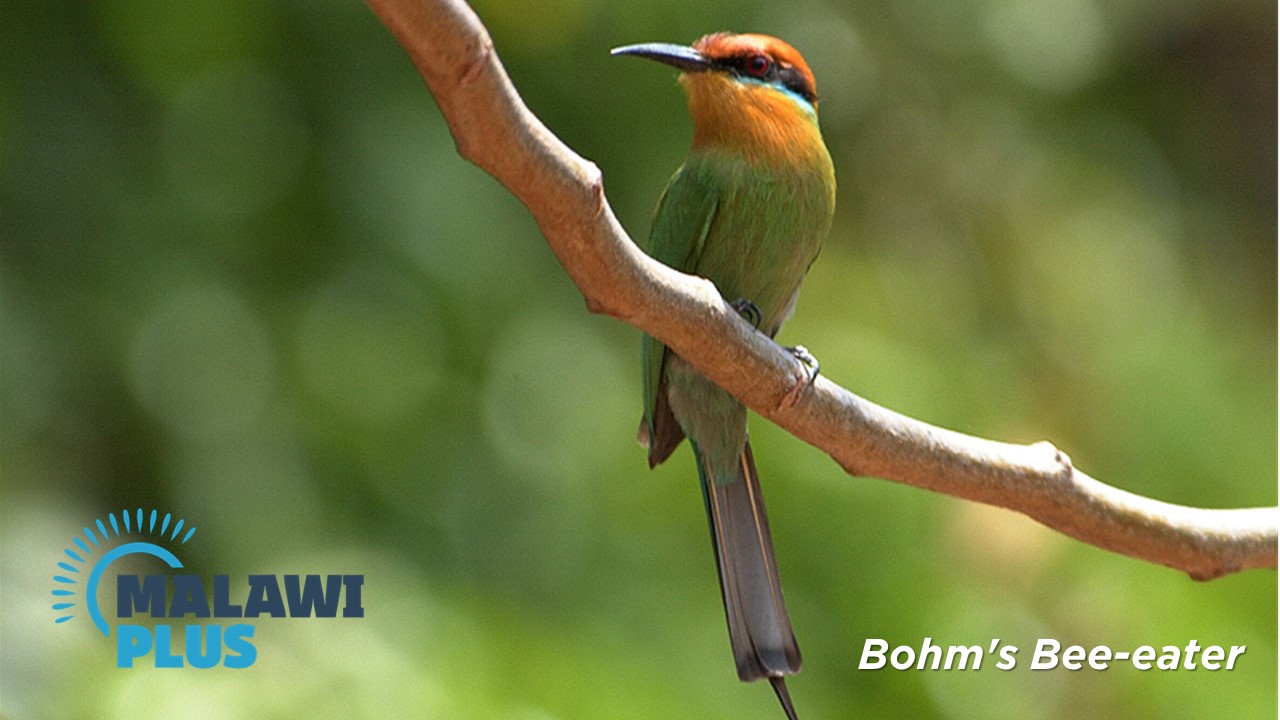
Malawi is home to over 650 species of birds, 10% of which cannot be found anywhere else in southern Africa.
Malawi is an invaluable birding destination for ornithologists and bird lovers, but even if you’ve never been birding before, the colourful variety of birds will fascinate you and give you the experience of a lifetime.
Malawi has a wide range of bird species, from the truly endemic Yellow-throated Apalis, to the endangered Cholo Alethe and the very large Marabou Stork, which reaches over 150 cm.
The reason for this is easily seen in Malawi’s geographical location and the diversity of its environmental range.
Malawi is a unique country, being long and narrow in shape, with one third of its land area occupied by the huge and beautiful Lake Malawi.
The Nyika plateau in the north, the rainforests in the mountains of Mulanje in the south, and the wetlands on the shores of Lake Malawi and along the Shire River – plateaus, mountains, lakes and wetlands all coexist in a relatively small area of land, providing for all kinds of bird habitat requirements.

20. Birdwatching in Nyika National Park

Located in Northern Malawi, Nyika National Park is home to over 400 species of birds and is a true birdwatching hotspot in Malawi.
The park is widely regarded as one of the most scenic parks in Africa, with rolling montane grasslands, interspersed with montane forests in the valleys, but with vast expanses of miombo forest at the bottom of the slopes.
10 Birds to See in Nyika National Park
1. Blue Swallow
2. Churring Cisticola
3. Wattled Crane
4. Sharpe’s Akalat
5. Short-winged Cisticola
6. Augur Buzzard
7. Stanley’s Bustard
8. Red-winged Francolin
9. Mountain Marsh Widow
10. Yellow Mountain Warbler

21. Birdwatching in Lengwe National Park

Located in the Lower Shire Valley, Lengwe National Park is home to over 330 species of birds, most of which are endemic, but some migratory birds can be seen.
Birdwatching is possible throughout the year, but the best time to see a combination of both local and migratory birds is during the rainy season from November to April.
10 Birds to See in Lengwe National Park
1. Crested Guinea Fowl
2. Yellow-billed Hornbill
3. Brown Snake Eagle
4. Little Spotted Woodpecker
5. African Paradise Flycatcher
6. Bohm’s Bee-eater
7. Long-crested Eagle
8. Woolly-necked Stork
9. Rudd’s Apalis
10. Vanga Flycatcher

22. Birdwatching in Liwonde National Park
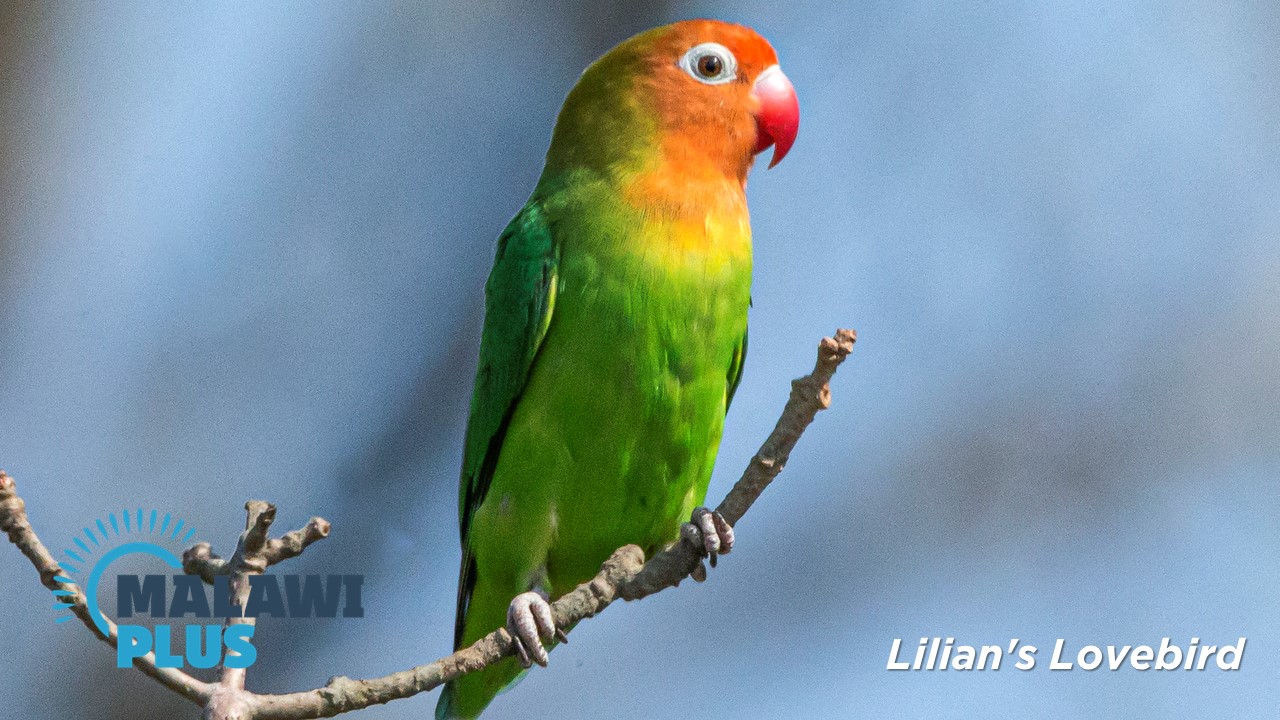
Situated along the Shire side, Liwonde National Park is probably the most popular birding destination in Southern Malawi.
The park is home to around 300 species of birds as well as large mammals such as lions, elephants and hippos.
The park offers walking and driving safari, but if you like waterbirds, you can also take a boat ride and watch them relax by the water.
10 Birds to See in Liwonde National Park
1. African Pitta
2. Speckle-throated Woodpecker
3. African Skimmer
4. White-backed Night Heron
5. Lilian’s Lovebird
6. Pel’s Fishing Owl
7. Bat Hawk
8. Bohm’s Bee-eater
9. African Broadbill
10. Brown-breasted Barbet

23. Birdwatching in Lake Malawi
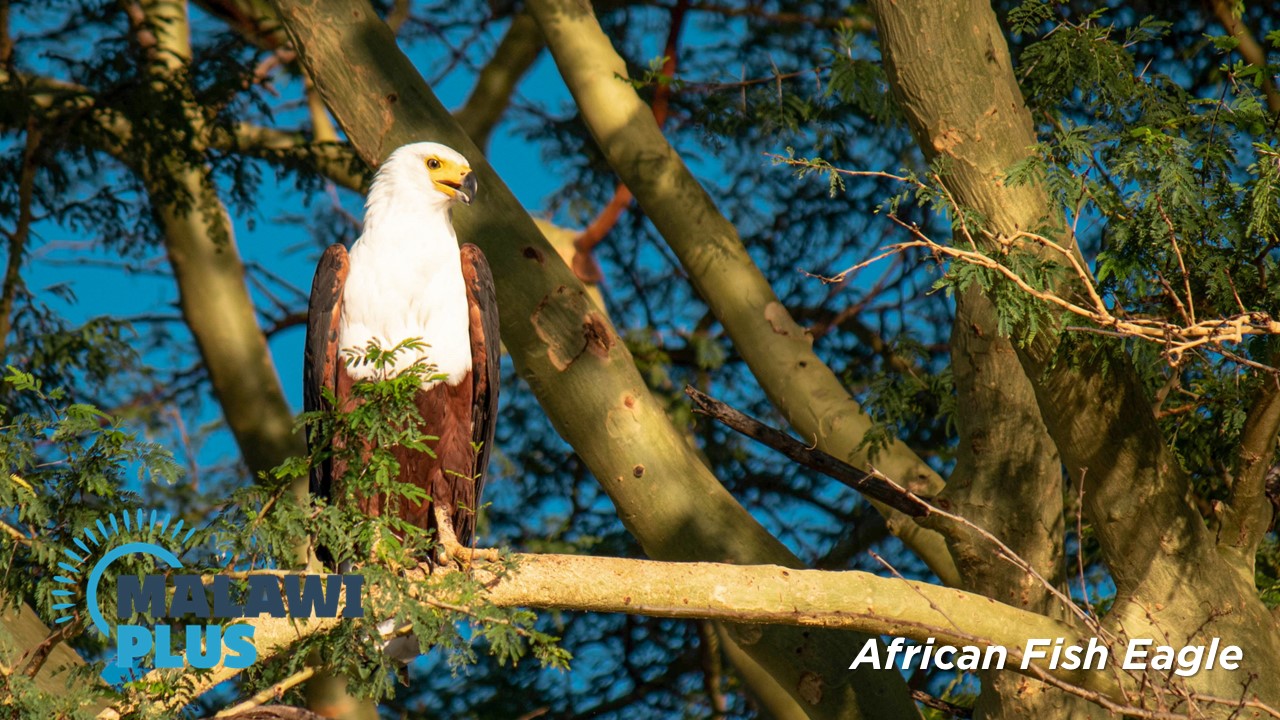
Lake Malawi which is a UNESCO World Heritage Site, is an excellent habitat for many birds that enjoy the special vegetation in the water, on the islands and on the lakeshores.
Malawi’s national bird, the majestic African Fish Eagle swoops down from the tops of the trees to target underwater fish.
The giant Marabou Stork is one of the most impressive birds to be seen near the lake due to its size.
10 Birds to See in Lake Malawi
1. African Fish Eagle
2. Marabou Stork
3. Trumpeter Hornbill
4. Southern Masked Weaver
5. Common Sandpiper
6. Brown Headed Parrot
7. Collared Palm Thrush
8. Mourning Dove
9. Pel’s Fishing Own
10. African Pal Swift
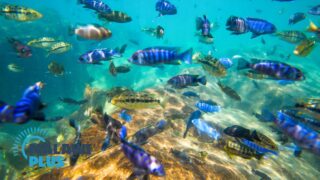
24. Birdwatching in Mount Mulanje
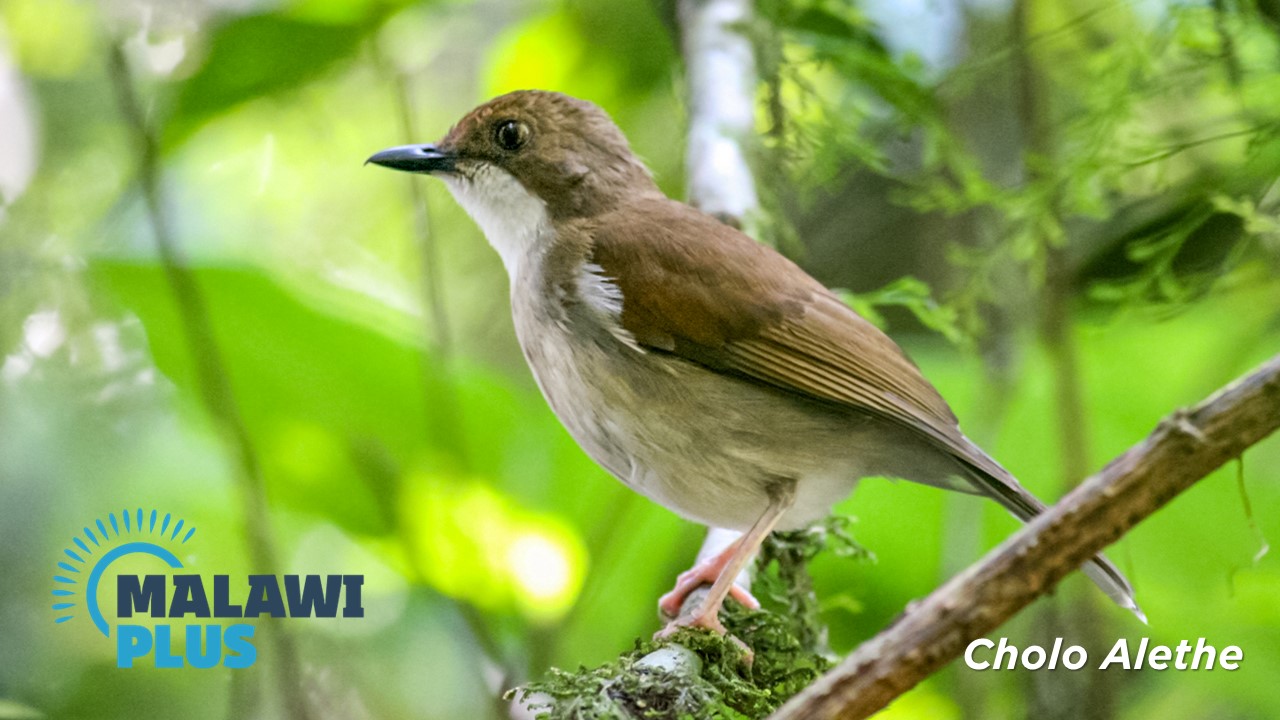
Mount Mulanje is Malawi’s highest mountain at 3,002m in southern Malawi.
It rises abruptly from the plains at an altitude of 600-700m to a plateau at an altitude of 1,800-1,900m, on top of which rises a rocky peak with a maximum height of 3,002m.
These highlands provide a unique habitat and around 180 bird species have been recorded.
The endangered Cholo Alethe has also been found here.
10 Birds to See in Mount Mulanje
1. Cholo Alethe
2. White-winged Apalis
3. Little Greenbul
4. Martial Eagle
5. Crowned Eagle
6. Green-headed Oriole
7. Black Eagle
8. Lanner Falcon
9. Peregrine Falcon
10. Lazy Cisticola
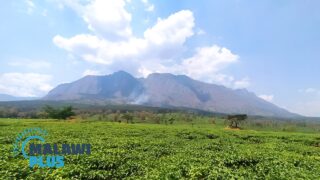
25. Birdwatching in Dzalanyama Forest Reserve
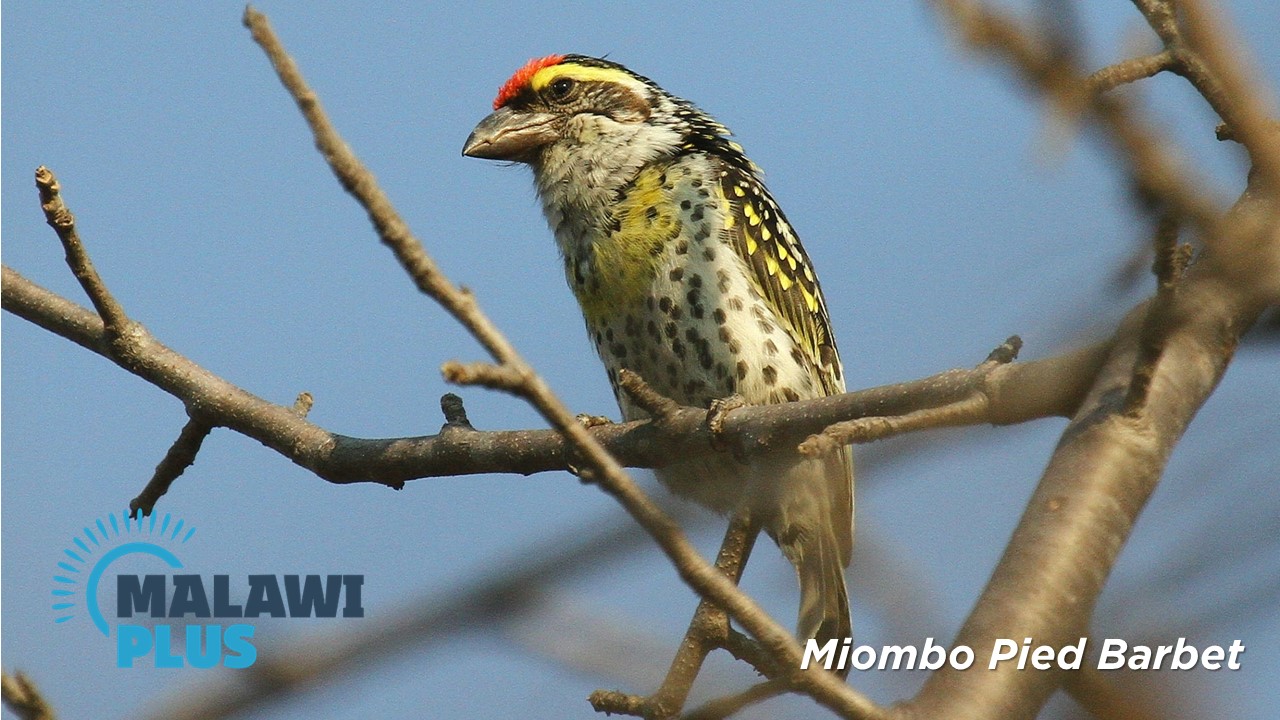
Located 60km south-west of Lilongwe, the Dzalanyama Forest Reserve is one of Malawi’s leading birdwatching destinations.
Almost the entire reserve is covered by miombo forest, which is an important habitat for the Miombo bird species.
Around 300 bird species have been identified and Dzalanyama often hosts international birdwatchers.
10 Birds to See in Dzalanyama Forest Reserve
1. Miombo Pied Barbet
2. Miombo Tit
3. Pale-billed Hornbill
4. Schalow’s Turaco
5. Streaky-headed Seedeater
6. Bohm’s Flycatcher
7. Boulder Chat
8. Striped Breasted Seedeater
9. Olive-headed Weaver
10. Souza’s Shrike

26. Birdwatching in Zomba Plateau
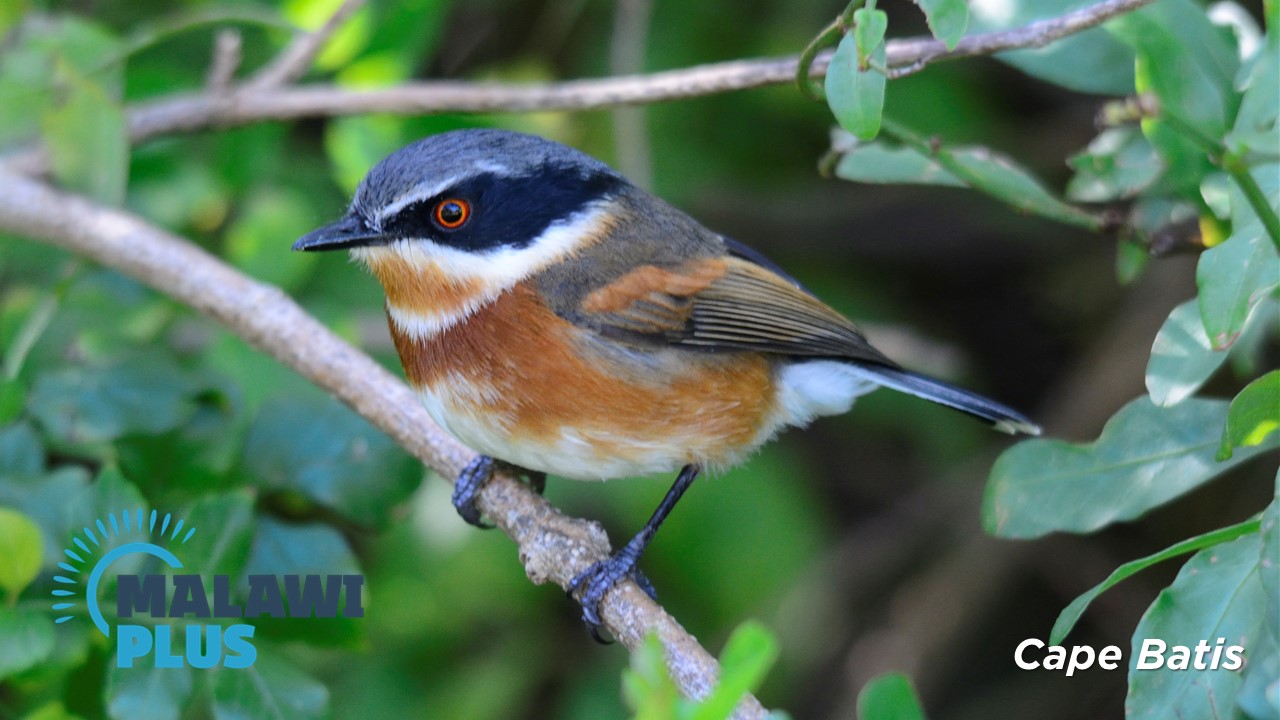
The Zomba Plateau is one of Malawi’s highlands, along with the Nyika Plateau.
However, in contrast to the moorlands and grasslands of Nyika, the Zomba Plateau is home to vast cedar, pine and cypress forests interspersed with a variety of endemic wildflowers, forming a paradise for birds.
Although there are not as many mammal species as compared to Nyika, it is home to many colourful and vibrant bird species.
10 Birds to See in Zomba Plateau
1. Bar-throated Apalis
2. Garden Warbler
3. Cape Batis
4. Little Greenbul
5. White-eared Barbet
6. Magpie
7. Forest Waver
8. Yellow-throated Apalis
9. White-winged Apalis
10. Blue-spotted Dove
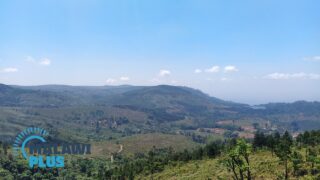
27. Birdwatching in Lake Chilwa
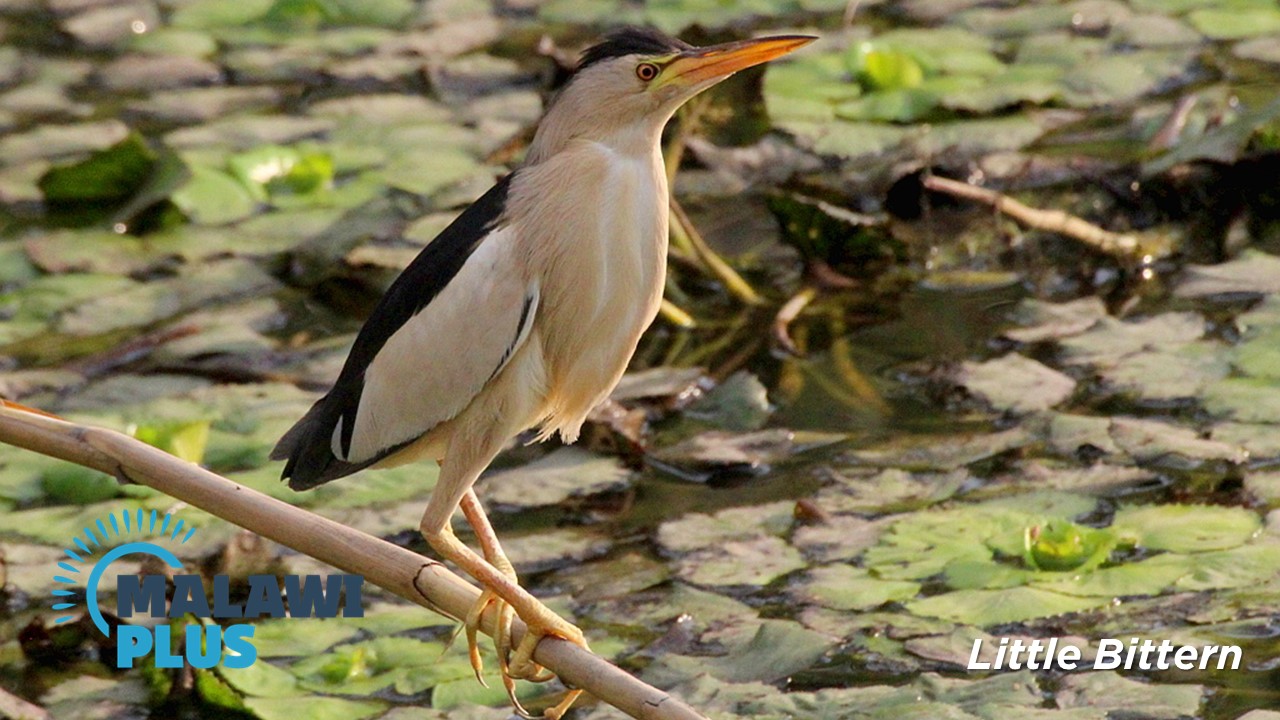
Located near Zomba, Lake Chilwa is Malawi’s second largest tropical lake with no outlet.
The lake is home to about 160 species, some of which come from Siberia along the Asia-East Africa Flyway to hibernate during winter.
To see all the waterbirds, it is best to take a boat with the help of a tour guide.
10 Birds to See in Lake Chilwa
1. Lesser Jacana
2. Egyptian Goose
3. Little Bittern
4. Lesser Flamingo
5. Egyptian Goose
6. Knob-billed Duck
7. Spur-winged Goose
8. White Pelican
9. Mottled Spinetail
10. Giant Kingfisher

28. Birdwatching in Ntchisi Forest Reserve
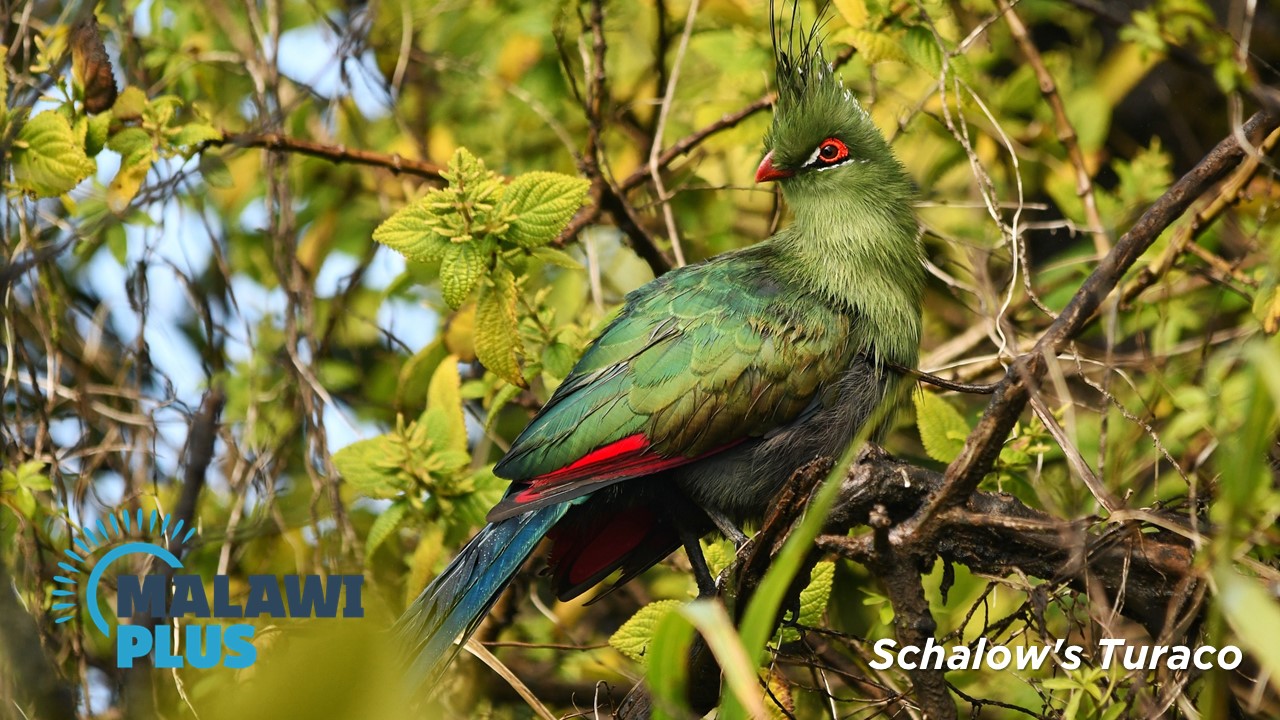
Ntchisi Forest Reserve which lies about 90km north-east of Lilongwe, at an altitude of 1500-1700 m and covers an area of about 75 km², is one of Malawi’s remaining intact tropical rainforests.
The richness of the vegetation in this forest – pines towering 30m overhead, brachystegia, heliconia, giant figs, vines and ferns – ensures that birdwatchers see a wide range of bird species.
10 Birds to See in Ntchisi Forest Reserve
1. Ashy Flycatcher
2. Schalow’s Turaco
3. Namaqua Dove
4. African Emerald Cuckoo
5. Mourning Dove
6. Blue-spotted Wood Dove
7. Cape Turtle Dove
8. Diederick Cuckoo
9. Laughing Dove
10. Red-eyed Dove
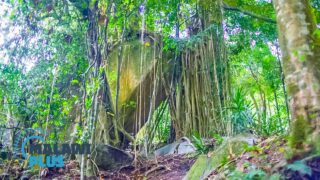
Hiking
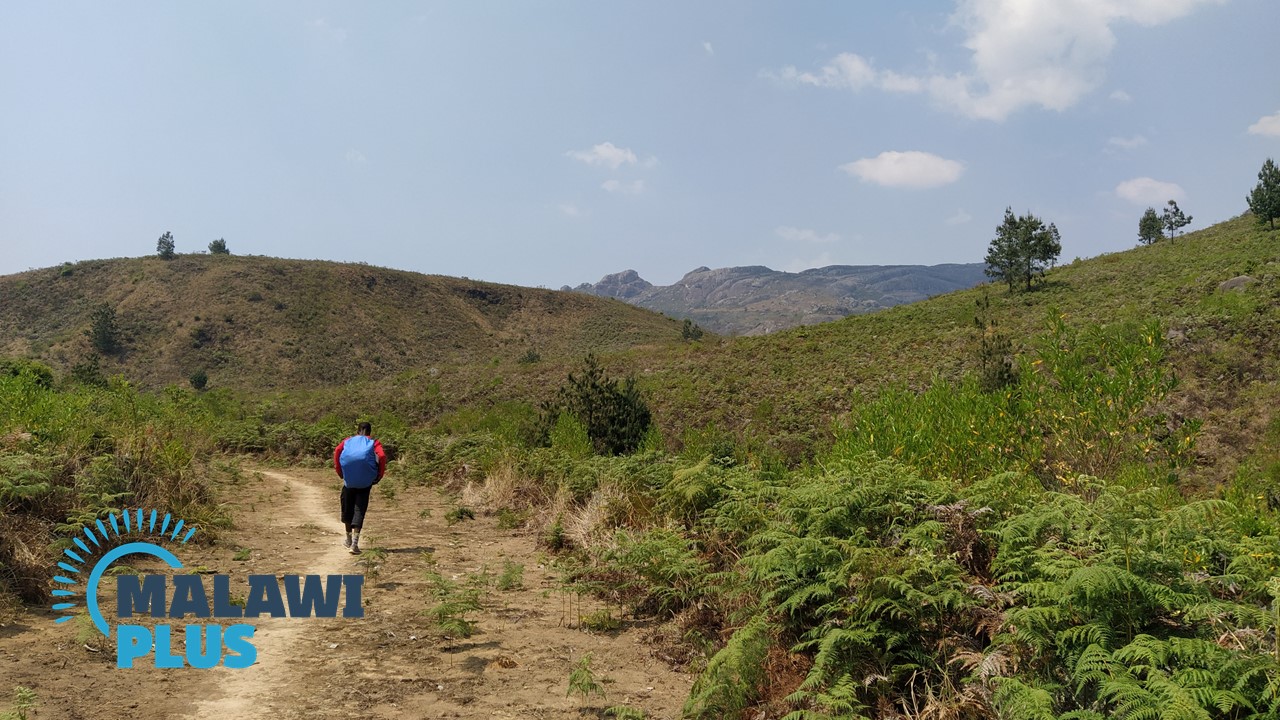
Malawi is an idyllic country for hiking and trekking and has one of the most exceptional landscapes in Africa.
Lake Malawi occupies a quarter of the country and its lowest point is almost at sea level, while Malawi’s highest peak, Mount Mulanje, reaches 3,002 metres.
This variety of elevation in a small country means that there is a breathtaking variety of lush trails throughout Malawi, including plateaus, highlands, forests, mountains, plains, sheer cliffs and dramatic river valleys.
Mount Mulanje is made up of hard metamorphic rocks such as granite and diorite and has the longest rock-climbing trails in Africa.
It may look like a precipitous, rugged mountain, but once you step onto the mountain, you will find lush grasslands and forested plateaus.
Many hikers refer to it as ‘Island in the Sky’ because of its majestic appearance as it looms surrounded by clouds soaring towards the sky.
Other prominent hiking and trekking destinations are also included in this booklet such as Nyika in the North, Dedza and Dzalanyama in the Central region and Zomba in the South.
This article also contains some hidden hiking and trekking destinations known only to locals that can be appreciated on a day trip.
29. Hiking Mount Mulanje (Mulanje)
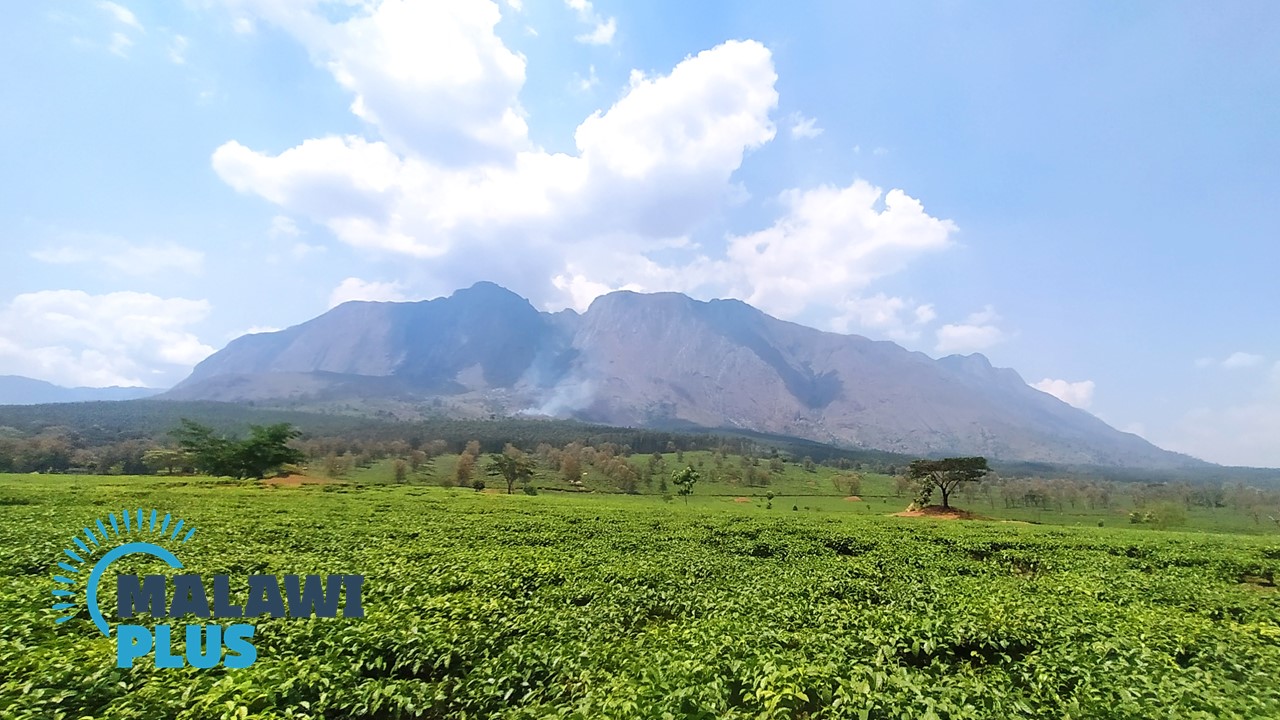
– Highest Mountain in Malawi –
Hiking Difficulty Scale:
Estimated Hiking Time: 3 Hours to 3 Days (depending on route)
Height: 3,002m
Mount Mulanje which is Malawi’s highest mountain (3,002 m) is located 65 km east of Blantyre and is locally known as “chilumba mu mlengalenga” (‘Island in the sky’).
This is because on misty days the mountain is shrouded in a smoky haze and the peak of the mountain breaks through the clouds.
The Mulanje massif is composed of hard metamorphic rocks such as granite and greenstone, which were formed by magma eruptions about 130 million years ago, eroding the surrounding soft rocks and gradually exposing them.
To the west of the mountain lies Chambe Peak, Africa’s longest rock-climbing spot, and although the climb may seem precipitous and rugged, once you step onto the mountain you are surrounded by valleys and ridges with grasslands, wooded plateaus and forested valleys that offer remarkable green vistas.
Mount Mulanje has 6 major trailheads and 10 mountain lodges, with more than 20 peaks above 2,500 m scattered throughout the area.
Hiking routes can be set up in a variety of ways, but it is best to decide according to your interests and the number of days you can spend in the mountains.
You can take a walk through the green tea plantations at the foot of the mountain or embark on a day hike to the spectacular Likhubula falls or attempt to climb Malawi’s highest peak, Sapitwa, while staying in a clean and simple mountain lodge.
This is guaranteed to be an unforgettable adventure.
Guides and porters can be arranged on the day of the hike at the various trailheads at the foot of the mountain.
Although guides and porters are not mandatory, it is recommended that you hike with a guide because it can be difficult to find your way in unfamiliar terrain and the weather can change abruptly.
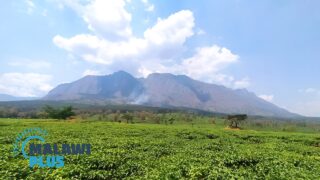
30. Hiking Nyika Plateau (Rumphi)
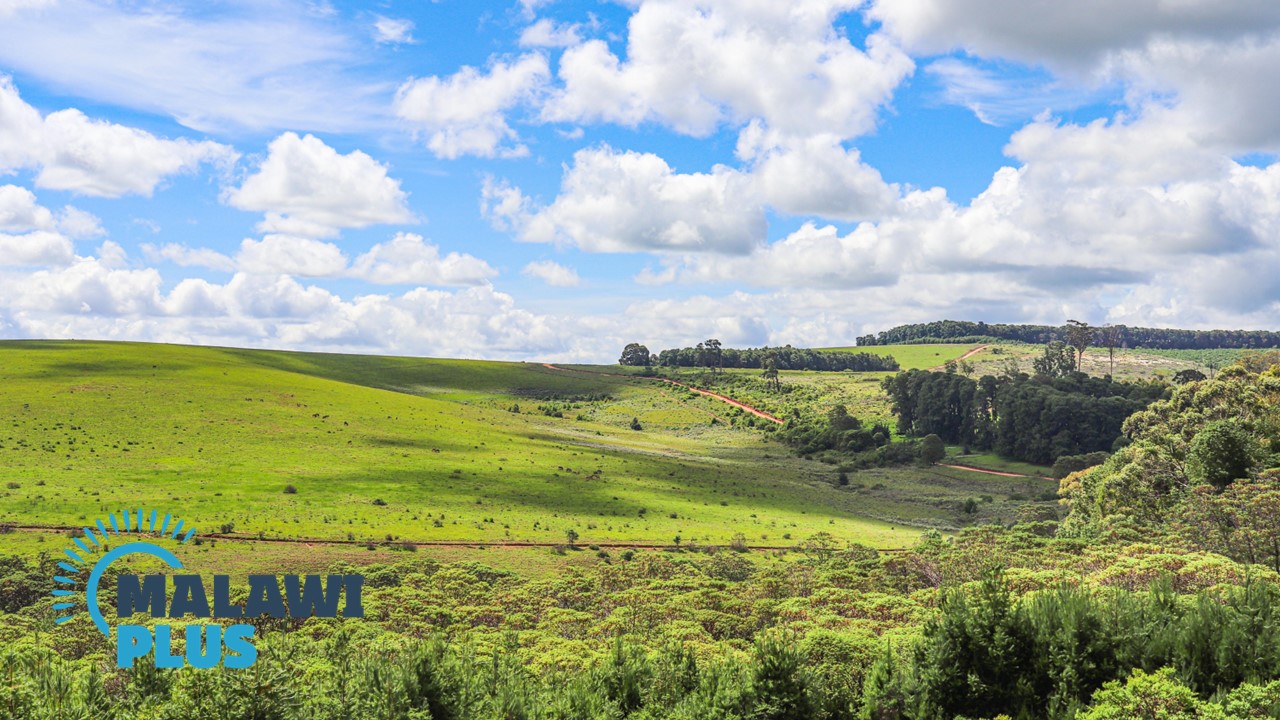
– Walk amongst Wildlife –
Hiking Difficulty Scale:
Estimated Hiking Time: 1 to 5 Days (depending on route)
Height: 2,605m
Located in northern Malawi, Nyika National Park covers an area of 3,200km2 and is the largest national park in Malawi.
It is also Malawi’s oldest national park, having been established in 1965.
Almost the entire Nyika Plateau, which rises over 2,500m above sea level, is designated as a national park, and the landscape of rolling hills, grasslands and flowers is breathtakingly stunning, leaving visitors speechless.
The name Nyika means “Where the water comes from”, since the plateau is Malawi’s most important catchment area.
It is also home to the richest orchid population in south-central Africa, with more than 200 species in bloom during the rainy season. Eleven of these species are endemic to Nyika, and a further 27 are found nowhere else in Malawi.
Nearly 100 species of mammal have been recorded in Nyika National Park, including large herds of antelope and the largest population of leopard in Central Africa.
You can also see eland, roan, zebra, buffalo and elephant.
Moreover, night drives also offer the possibility of encountering hyenas and other small nocturnal predators.
Nyika is also one of Malawi’s leading birding destinations, with over 400 bird species and four species found in Nyika that have not been recorded elsewhere in Malawi (Yellow Mountain Warbler, Chirring Cisticola, Ayres Cisticola and Mountain Marsh Widow).
The best way to appreciate the majestic scenery of Nyika is by taking a three-day hike to Livingstonia.
Mountain bikes can also be hired at the lodge.
31. Hiking Zomba Plateau (Zomba)
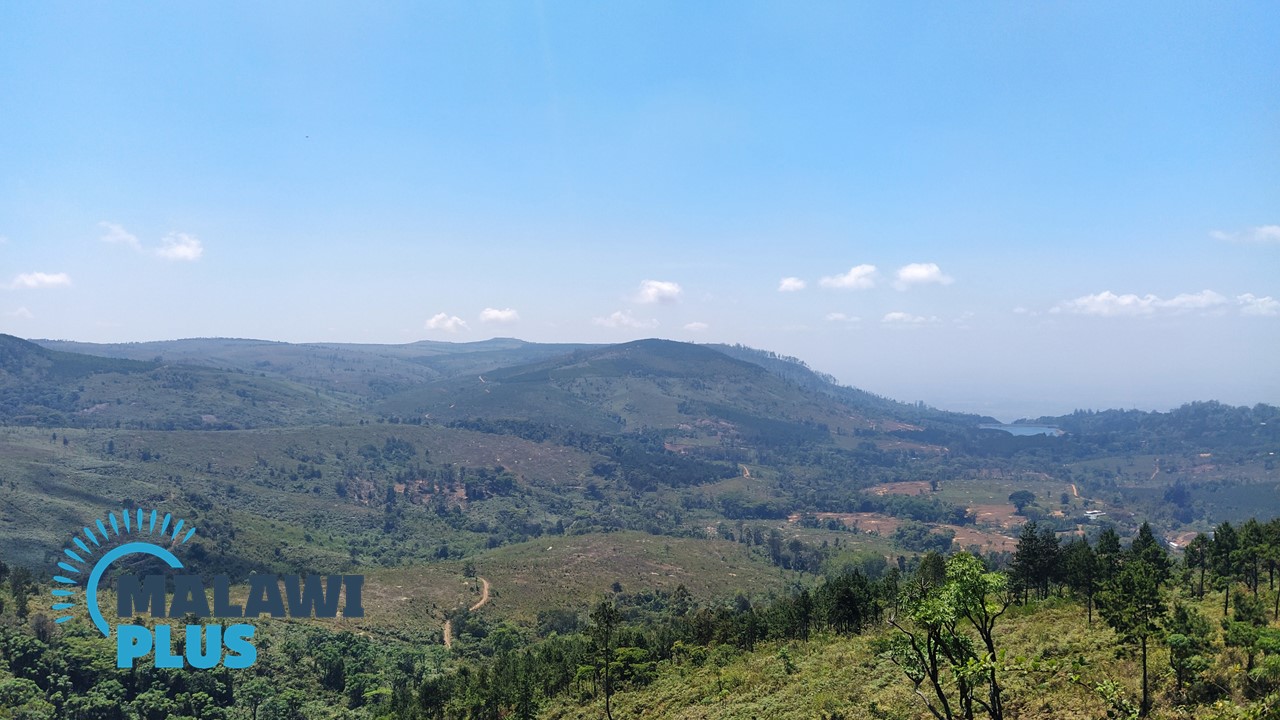
– Experience the Most Spectacular Spots –
Hiking Difficulty Scale:
Estimated Hiking Time: 1 to 8 Hours (depending on route)
Height: 2,087m
The Zomba Plateau extends behind Zomba Town, which was also Malawi’s first capital until 1974, when the first president moved the capital to Lilongwe.
The plateau is a huge mountain of about 130 km², with its highest point, Malombe Peak, reaching 2,087 meters above sea level.
It is perfect for hiking, and the view of Zomba from the top of the mountain is so remarkable that it came to be known as “the best in the British Empire” during the colonial period.
Giant butterflies and baboons can also be seen on the plateau.
Many hikers use the Sunbird Ku Chawe Hotel as a starting point for their hikes, and the Zomba Plateau offers a wide range of beautiful scenery, including Malombe Peak, Chingwe’s Hole, William’s Falls and many more.
There are various locations where you may take in the beautiful and breathtaking vistas.
The Zomba Plateau is located approximately 80 km north of Blantyre and offers a variety of hiking trails ranging from 1- 8 hours in duration, making it possible to have a day trip from Blantyre.
Additionally, Zomba also offers excellent accommodation, restaurants, and British colonial architecture such as the Governor General’s residence and the Old Parliament buildings.
We strongly encourage you to spend the night in the area because there are so many historical sites to explore.
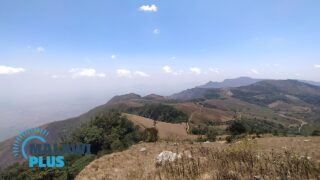
32. Hiking Viphya Plateau (Mzimba)
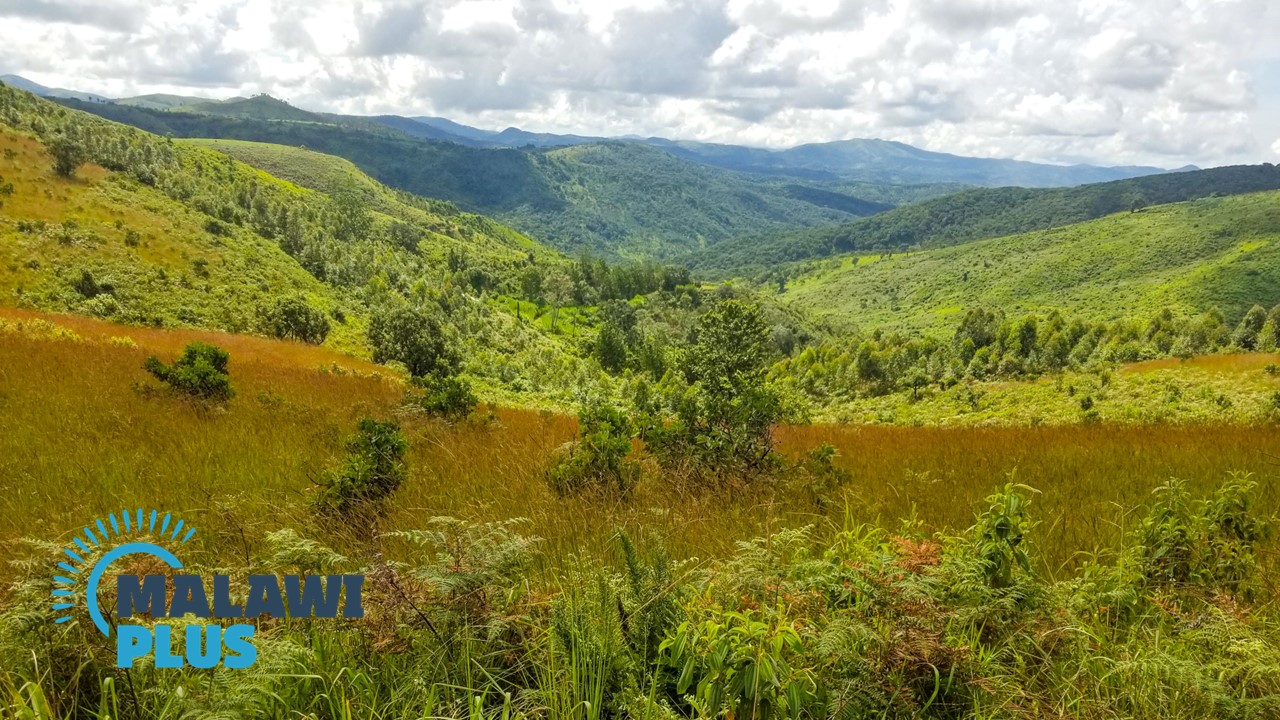
– Discover the Largest Man-made Forest in Africa –
Hiking Difficulty Scale:
Estimated Hiking Time: 3 Hours to 3 Days (depending on route)
Height: 2,050m
Located at an altitude of 1,700 m in northern Malawi, the Viphya Plateau is home to the Viphya Forest, which covers an area of 560 km² and is considered the largest planted forest in Africa.
It is an exciting highland wilderness with several beautiful rivers flowing into Lake Malawi, mixed with montane grasslands, evergreen forests and exotic pine species, and a spectacular scenic landscape.
There are many excellent hiking trails, especially around the Luwawa Forest Lodge, with marked paths and safe walks through the forest.
Walking through the plantations of sweet-smelling pine trees, you can feel a sense of peace and tranquillity.
The area is also ideal for birdwatching, with more than 280 wonderful bird species to observe.
The most popular walk is the three-day walk, which begins at Kawandama Hills, passes through the Viphya Forest wilderness, descends the steep slopes of the Rift Valley and finishes near the Kande Beach Resort on the shores of Lake Malawi.
For all hikers who love outdoor activities, this is a dream come true in Malawi.
It is also perhaps the best area for mountain biking in the country.
The Luwawa International Mountain Bike Marathon has been held every June since the first edition in 2004.
The race starts at Kasito Lodge and finishes at Luwawa Forest Lodge, 53 km away.
33. Hiking Ntchisi Forest Reserve (Ntchisi)
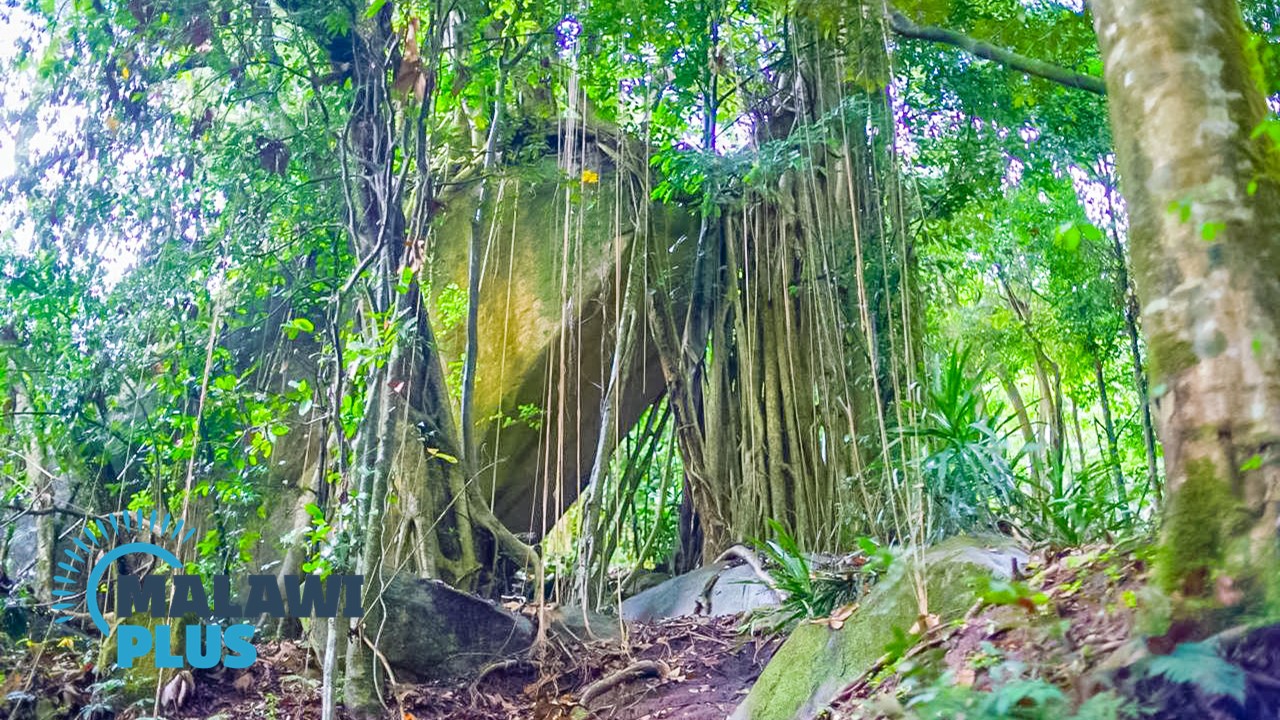
– Malawi’s Last Remaining Tropical Rainforest –
Hiking Difficulty Scale:
Estimated Hiking Time: 3 Hours
Height: 1,702m
Located at an altitude of 1500-1700m, and covering an area of approximately 75 km2, Ntchisi Forest Reserve is one of Malawi’s last remaining intact rainforests, located about 90 km north-east of Lilongwe.
The climate at Ntchisi Forest Reserve is cooler than in the surrounding lowlands, making it suitable for sheltering from the summer heat.
In the mountain lowlands, visitors can walk through a variety of vegetation, including pines, Brachystegia and Heliconia towering 30 metres overhead, and giant figs, vines and ferns in the rainforest.
The flora of this rainforest is of outstanding natural beauty and a true highlight of the area.
There are several walking options within the reserve.
Three colour-coded trails – red, blue and yellow – are available, and are all well marked, with trees and rocks regularly painted in their respective colours.
Ntchisi Forest Lodge which is located within the reserve, has been developed in recent years to cater for international visitors and is rapidly gaining a reputation for itself.
The hiking trails can be enjoyed as a day trip from Lilongwe, but after hiking, a late lunch at the lodge or an overnight stay for a delicious course dinner is also a superb option.
34. Hiking Nkhoma Mountain (Lilongwe)
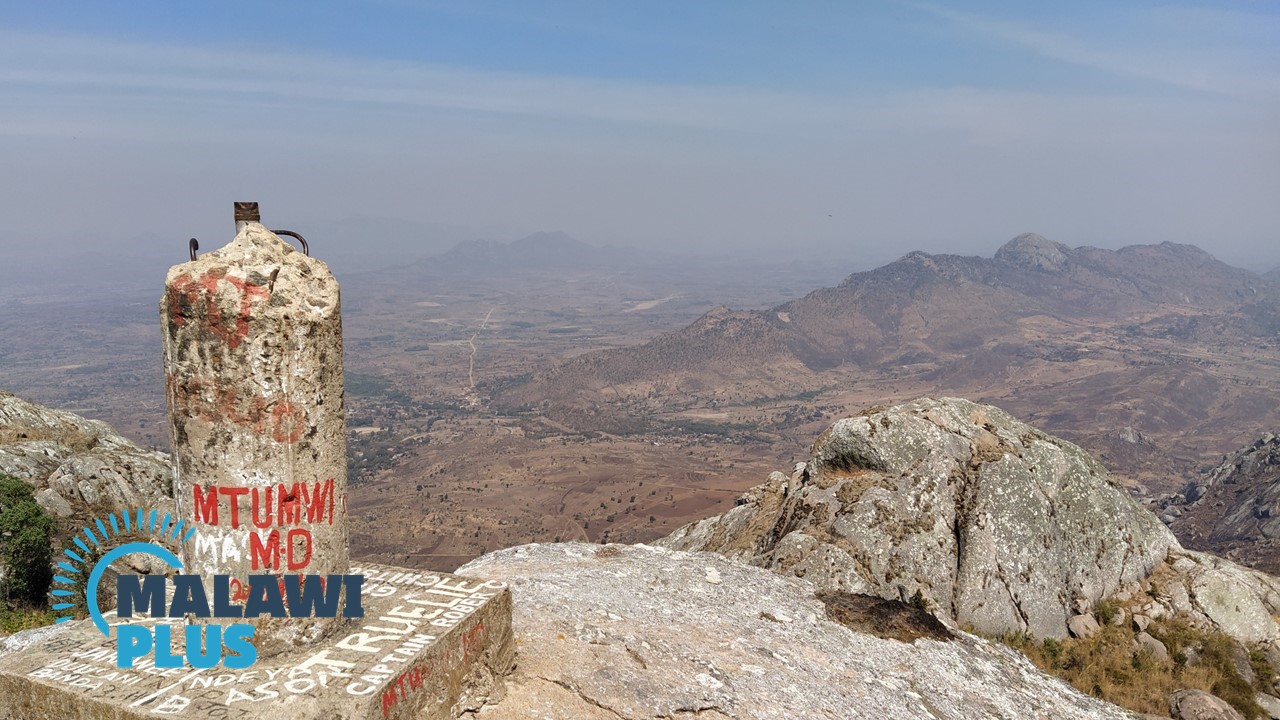
– Most Rewarding Mountain to Climb around Lilongwe –
Hiking Difficulty Scale:
Estimated Hiking Time: 4 Hours
Height: 1,800m
Nkhoma Mountain rises behind Nkhoma Mission Hospital, about 60 km south of Lilongwe on the M1 road, and can be seen from the centre of Lilongwe.
Nkhoma Synod was founded in 1889 by Scottish missionaries from South Africa, and Nkhoma subsequently became the Mission’s headquarters.
The area around Nkhoma Mission is a lovely, green, tranquil place with historic buildings.
Nkhoma mountain has two peaks, Nkhoma and Mbalambala, locally known as ‘the-two-headed mountain’.
It is very popular with local hikers as the most challenging and rewarding of the mountains around Lilongwe.
From the top of the mountain, you can see Lilongwe, Lake Malawi and other distant landscapes.
The spectacular views will leave you awestruck.
The first part of the hike is not signposted, so ask a local to guide you.
After the first 4 km, a gentle gradient with colourful wildflowers, a hut is erected.
The next 2 km to the summit are more rocky and more challenging, but even beginners can make it to the top.
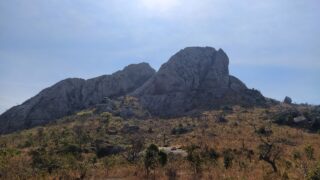
35. Hiking Michiru Mountain (Blantyre)

– Explore the Closest Nature Reserve from Blantyre –
Hiking Difficulty Scale:
Estimated Hiking Time: 3 Hours
Height: 1,470m
At 1,460 m above sea level, Michiru Mountain is the closest nature reserve to Blantyre, located 8 km north-west of Blantyre Township, and is the only mountain around Blantyre that still contains primary forest and some wildlife.
Michiru Mountain is an ideal day hike or picnic from the Blantyre area and is popular with families and local young people, as well as international tourists.
There are several hiking routes, the most popular being the ‘Way of the Cross/Njira ya Mtanda‘.
There are 15 points leading up to the main cross at the top, depicting the events of Jesus’ journey to Golgotha.
You don’t have to be a Christian to enjoy the well-maintained path and atmosphere.
You can also take in the view of Blantyre while having a snack at a picnic table near the cross.
If you have time and energy to spare, try to reach the summit of Michiru Mountain.
The hike to the top takes about three hours, but the panoramic view from there is spectacular.
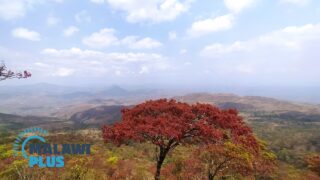
36. Hiking Satemwa Tea Estate (Thyolo)
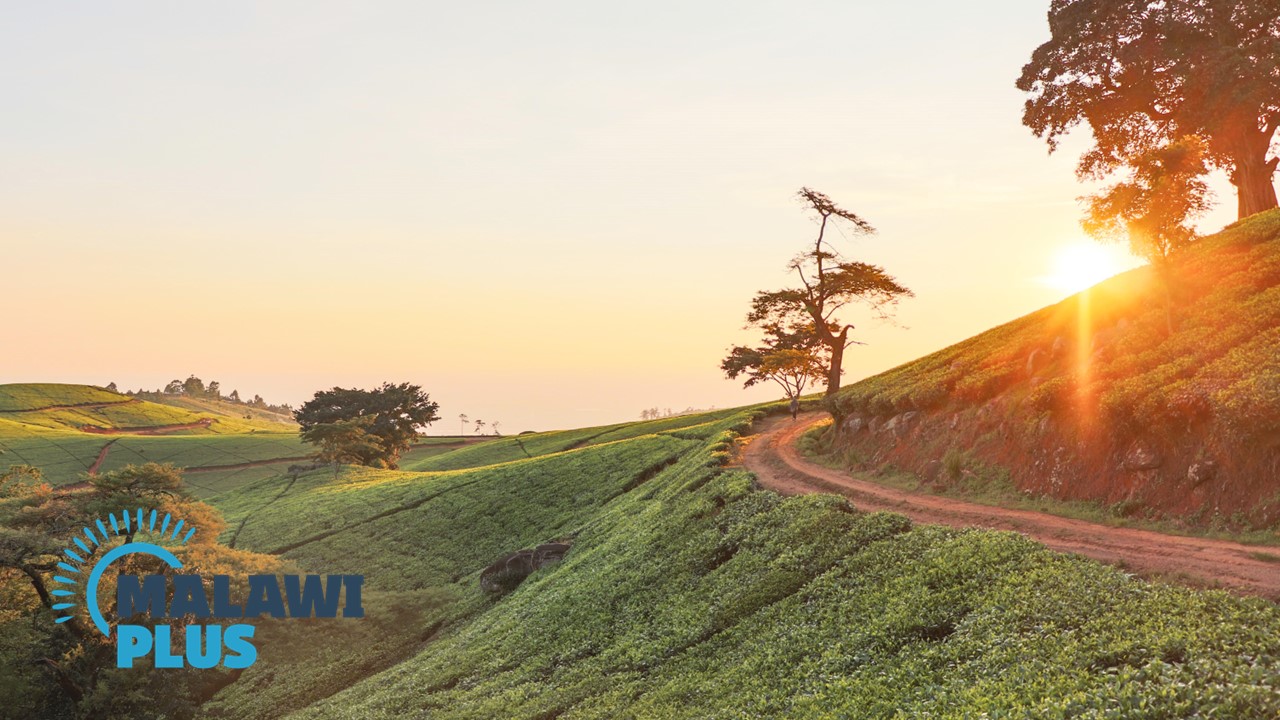
– Walk through Tea and Coffee Estates –
Hiking Difficulty Scale:
Estimated Hiking Time: 3 Hours
Height: 1,462m
Located in Malawi’s southern Thyolo district, Satemwa Tea Estate was established in 1923 and is one of Malawi’s oldest tea and coffee estates.
It has been producing excellent tea and coffee for almost 100 years and exports it all over the world.
With more than 170km of dirt roads and hundreds of paths and tracks, Satemwa is the perfect place for those seeking an unusual and special hike.
Take a leisurely stroll along the banks of the creek while enjoying a guided walk through the coffee fields or you can climb the rocky slopes of Thyolo Mountain for magnificent views of Mount Mulanje and the Lower Shire Valley.
In the evening, Thyolo’s magnificent tea plantations are coloured golden by the sunset.
This spectacular view is a must-see for sunset lovers.
The site also provides an ideal habitat for Malawi’s many species of birds, including the endangered Thyolo Alethe (Alethe choloensis).
After a hike at Satemwa Tea Estate, relax with a cup of tea or coffee and soak up the calm and tranquility.
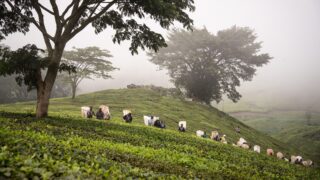
37. Hiking Chombe Plateau (Rumphi)
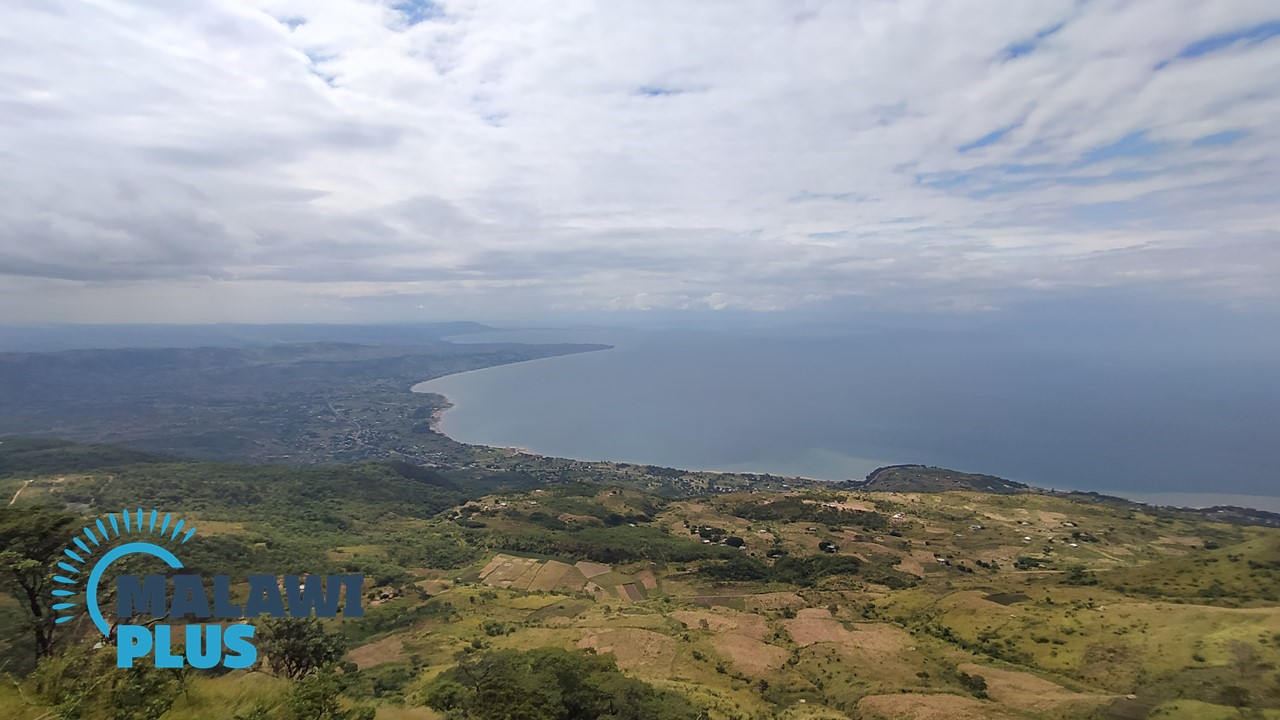
– Malawi’s Most Spectacular View from the Summit –
Hiking Difficulty Scale:
Estimated Hiking Time: 6 Hours
Located in Livingstonia, Rumphi District, the Chombe Plateau is still not well known, but from the top of the plateau, the view of Lake Malawi and the surrounding mountains of Tanzania and Mozambique is spectacular and will make you forget the long way up.
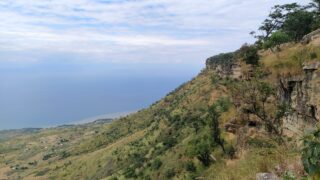
Cultural and Historical Sites
Malawi has much more to offer culturally and historically than just Lake Malawi and safaris.
Here are some of the places you should visit when you are in Malawi.
38. Chongoni Rock Art Area (Dedza)
 Chongoni Rock Art Area is a designated UNESCO World Heritage Site which was set up in 2006 and is situated within a cluster of forested granite hills and covers an area of 126.4km², northwest of Dedza for about 25km.
Chongoni Rock Art Area is a designated UNESCO World Heritage Site which was set up in 2006 and is situated within a cluster of forested granite hills and covers an area of 126.4km², northwest of Dedza for about 25km.
The Rock Art is one of Malawi’s most neglected national treasures, containing 127 rock art sites that feature the most concentrated cluster of rock art found in Central Africa.
Of all the 127 sites, only three are open to public – Chentcherere, Namzeze and Mphunzi.
All the sites are being maintained by the Antiquities Section of the Malawi Department of Culture.
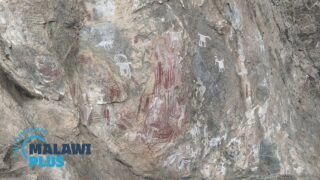
39. National War Memorial Tower (Lilongwe)
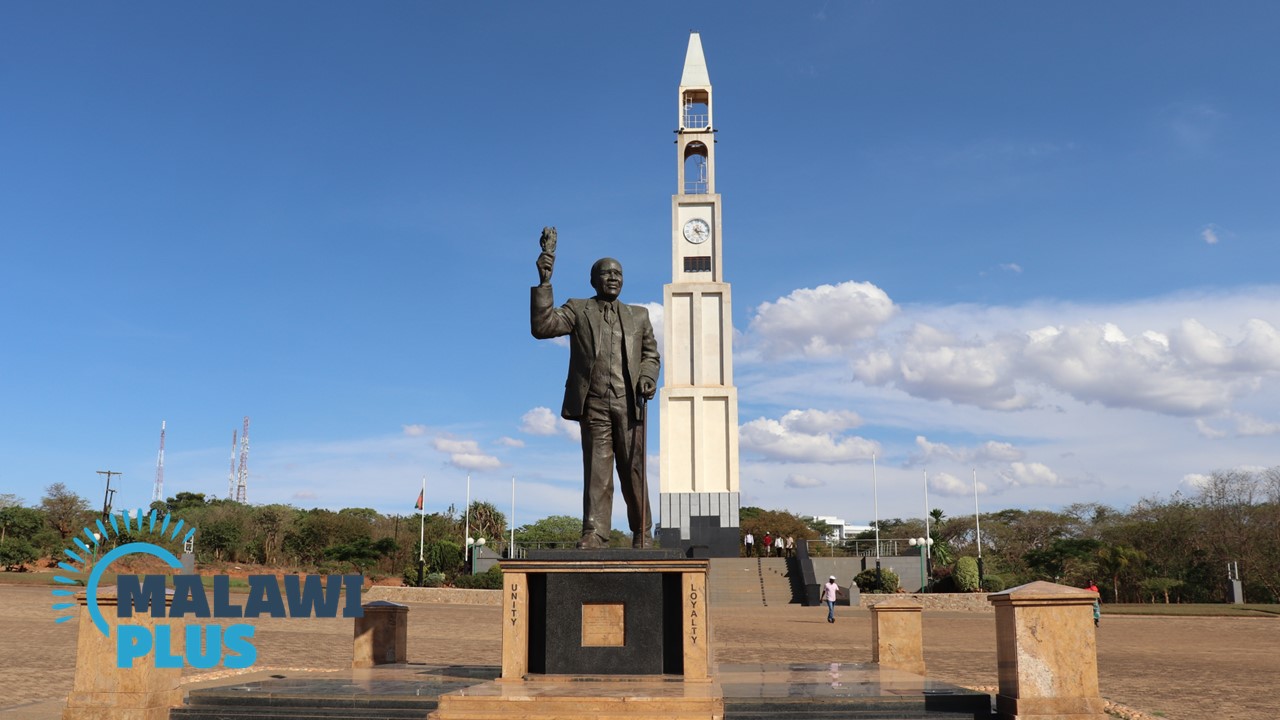 Located at the centre of Lilongwe between the Capital Hill and Area 18 Filling Station, the memorial tower is set in the same compound as a statue of the first president of Malawi, Dr. Hastings Kamuzu Banda.
Located at the centre of Lilongwe between the Capital Hill and Area 18 Filling Station, the memorial tower is set in the same compound as a statue of the first president of Malawi, Dr. Hastings Kamuzu Banda.
The monument was constructed in honour of all soldiers and civilians who died during the First and Second World Wars and other military operations both within and outside Malawi.
The view from the top is the one of the best viewing points of the city in Lilongwe.
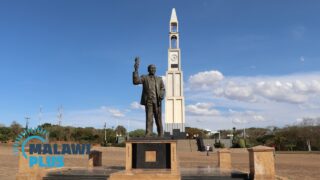
40. Kungoni Centre and Chamare Museum (Dedza)
 The Kungoni Centre was established by a Canadian, Father Claude Boucher Chisale in 1976.
The Kungoni Centre was established by a Canadian, Father Claude Boucher Chisale in 1976.
Visitors can watch the talented artists go to work on blocks of wood, carving them into exquisite sculptures.
Chamare Museum was established on the ground of the Kungoni Centre in 2012 and is beautifully decorated with vibrant murals depicting scenes from Malawian history.
Its three rooms are located in the three main tribal groups (Chewa, Ngoni and Yao) which meet in the Mua area, with over 400 Gule Wamkulu masks.
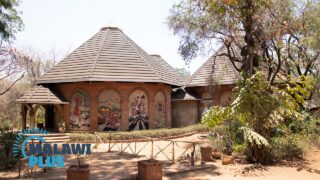
41. Cultural & Museum Centre Karonga – CMCK (Karonga)
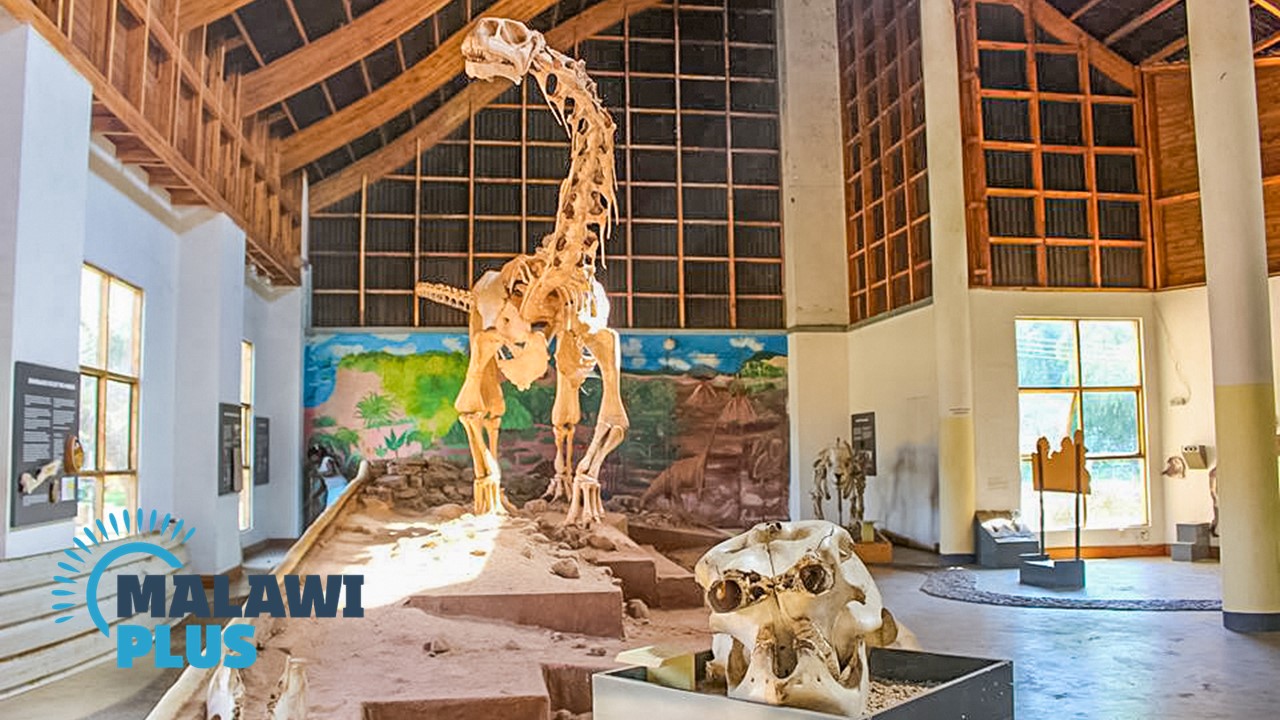 The Cultural & Museum Centre Karonga (CMCK), commonly called Karonga Museum was constructed through EU funding and officially opened by then President Bingu wa Mutharika in November 2004.
The Cultural & Museum Centre Karonga (CMCK), commonly called Karonga Museum was constructed through EU funding and officially opened by then President Bingu wa Mutharika in November 2004.
It is Karonga’s newest and most worthwhile attraction, this thoroughly modern and commendably informative installation deserves an hour or two of your time.
The central exhibition entitled ‘Malawi from Dinosaurs to Democracy’ focuses on 240 million years of Karonga via milestones such as prehistoric landscapes, animals and early humans and their way of life, archaeological records, history of slave trade and colonial era, Malawi under Dr. Banda, culture and traditions of Karonga people.
The main exhibit is a life-size replica skeleton of the Malawisaurus (Malawi Lizards), whose virtually intact 120-million-year-old fossil skeleton was discovered in 1924 in Karonga District.
There is also a superb sequence of displays on human evolution, including replica of the 2.5-million-year-old Hominid’s jawbone discovered near Chilumba in 1991.
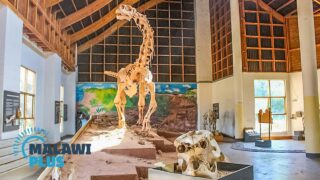
42. Museum of Malawi (Chichiri Museum) (Blantyre)
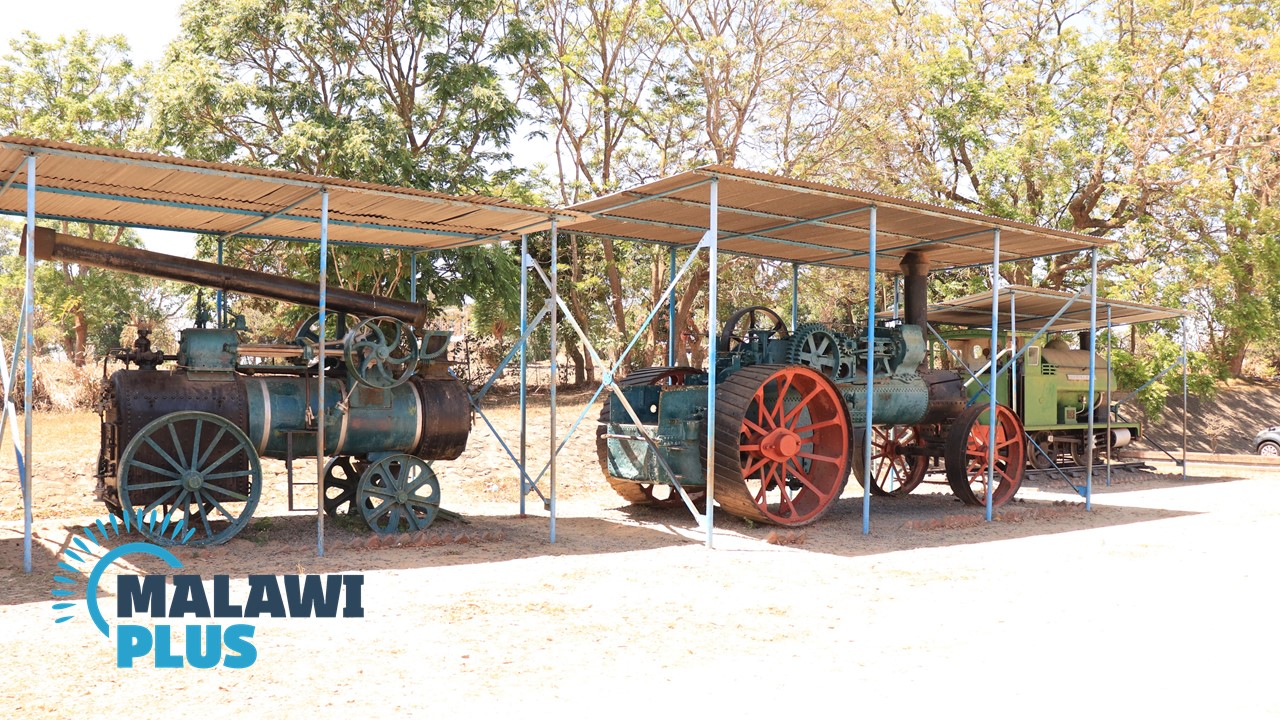 Opened in 1966, the Malawi Museum, commonly known as the Chichiri Museum, is Malawi’s first museum located near the Chichiri Shopping Mall in Blantyre.
Opened in 1966, the Malawi Museum, commonly known as the Chichiri Museum, is Malawi’s first museum located near the Chichiri Shopping Mall in Blantyre.
The museum has interesting exhibits mainly on the history and culture of Malawi and the wildlife of Malawi’s national parks.
The exhibits range from Stone Age tools to old banknotes, traditional musical instruments and artefacts, and documents relating to the slave trade and Malawi’s independence.
Outside the building you will find an old locomotive from 1902, Malawi’s first fire engine, a bus from Nyasaland and a small house where you can learn about the traditional way of life.
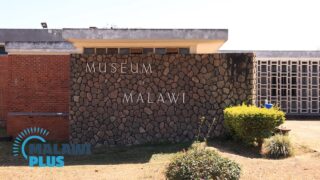
43. St. Peter’s Cathedral (Likoma)
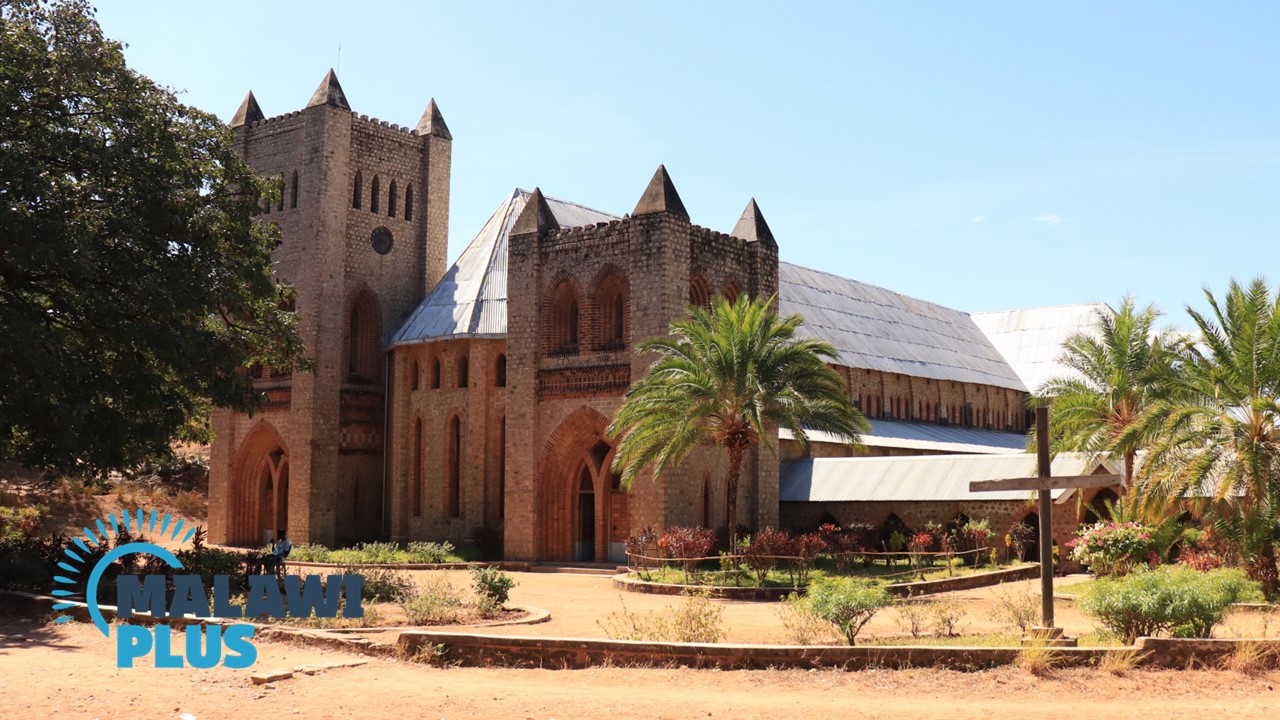 Located in the Likoma island, St Peter’s Cathedral is the principal Church of the Anglican Diocese of Northern Malawi.
Located in the Likoma island, St Peter’s Cathedral is the principal Church of the Anglican Diocese of Northern Malawi.
After the foundation stone of the Cathedral was laid by Bishop Gerald Trower in 1903, the cathedral was dedicated in 1905 and completed by Bishop Thomas Cathrew Fisher in 1911.
Native granite was used in the cathedral’s construction, while other materials were carried over from mainland and other countries, including bricks, timber, lime and cement.
Soil from Jerusalem was placed under the high altar.
It is said to be the third largest cathedral in Central Africa and the same size as Winchester Cathedral in the UK.
Its beautiful stained-glass windows, elaborate stone work and sheer scale convey the seal of the missionary creator’s religions conviction.

44. St. Michael and All Angels Church (Blantyre)
 St. Michael and All Angels Church is located on the original Scottish mission site in Blantyre, and was constructed from 1888 to 1891.
St. Michael and All Angels Church is located on the original Scottish mission site in Blantyre, and was constructed from 1888 to 1891.
This magnificent red-brick church has been designated a national monument by the Malawian Department of Antiquities and is one of the biggest landmarks of Blantyre.
It has been described by Rev. Alexander Hetherwick as the first permanent Christian Church erected between the Zambezi and the Nile rivers.
The architect, Rev. David Clement Scott previously had no prior experience in architecture or building.
The local laborers also had no experience in this type of construction.
There were no drawings, nor sketches before construction, so everything was first tested with bricks before the final assembly.
You’ll see that the two towers on both sides are quite different and not designed to be identical, another distinctive feature of the church’s architecture.
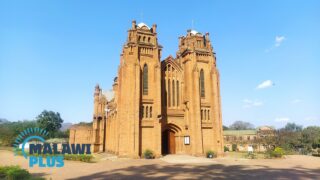
45. Livingstonia Mission Church and Stone House
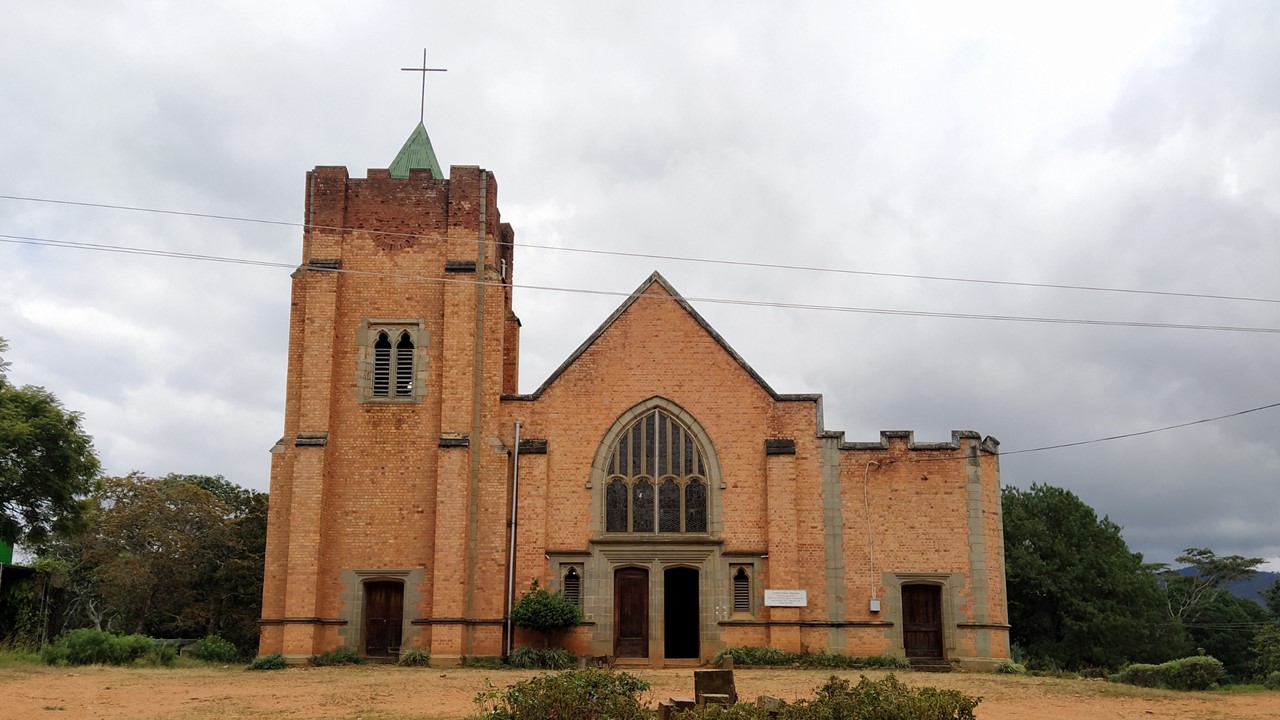 Livingstonia Mission Church is situated on a hill 900m above Lake Malawi, and has a beautiful stained-glass window at the main entrance depicting David Livingstone with Lake Malawi in the background.
Livingstonia Mission Church is situated on a hill 900m above Lake Malawi, and has a beautiful stained-glass window at the main entrance depicting David Livingstone with Lake Malawi in the background.
Visitors are welcome to join in the Sunday morning service.
The Old Stone House, built in 1903, was once the home of Dr. Robert Laws for 25 years, and it is now a small museum with fascinating exhibits on the history of Livingstonia.
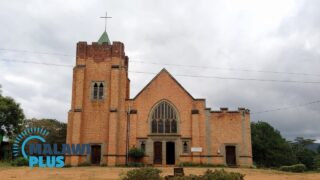
Local Food and Drink
46. Nsima

Nsima is Malawi’s national dish, made from maize flour mixed with hot water and kneaded until thickened.
Nsima is most popular in Malawi, although other types of carbohydrates such as rice, cassava and potatoes are also eaten.
Nsima is usually eaten with bare hands with stewed vegetables, fish, beans or meat.
47. Kondowole

Kondowole is a staple food eaten mainly in northern Malawi, similar to Nsima, but whereas Nsima is made from maize flour, Kondowole is made from cassava flour.
Kondowole is usually eaten with fish, but can be eaten with any type of side dish.
It is sticky and filling, and some people say that if they eat Kondowole for lunch, they are not hungry at night, even if they have not eaten anything else.
Try this delicious dish when travelling in northern Malawi.
48. Chambo

One of Malawi’s most famous dishes is chambo.
Chambo is endemic to Lake Malawi and is a type of freshwater fish in the tilapia family.
It is dried in the sun, grilled, boiled or fried and eaten with soup.
In Malawi, it can be found in many restaurants and hotels, especially on the shores of Lake Malawi.
A trip to Malawi is not complete without a taste of chambo.
49. Zitumbuwa

Zitumbuwa is a popular snack in Malawi, similar to banana fritters.
They are usually fried after mixing maize flour, bananas and sugar together and come in different variations.
Desserts are eaten on special occasions in Malawi, and zitumbuwa is one of the cheapest and tastiest desserts available on Malawi’s roadsides and markets.
If you get hungry while sightseeing or shopping in Malawi, try zitumbuwa.
50. Thobwa

Thobwa is a traditional fermented drink popular throughout Malawi, made from maize and millet or sorghum, with a milky appearance, grain flavour and grainy texture.
Because Thobwa is made from maize, it is very filling and many Malawians take it as their energy drink for the day, and it is sold everywhere in recycled plastic bottles in towns and in clay pots in villages.
The name, Thobwa means ‘sweet beer’ and is non-alcoholic but becomes a local beer when left to ferment for five days.





